Taking the train in Japan - all you need to know

Mar 28, 2024 • 11 min read

Find your way in Japan with our ultimate guide to rail travel © Chay_Tee / Shutterstock
You will fall passionately in love with trains in Japan .
Japanese people didn’t invent rail travel, but they arguably perfected it. Whether you’re on the newest shinkansen (bullet train) zooming across the country at 320km/h (199mph) or an elderly regional railcar, you can count on your train being scrupulously clean, safely operated, highly reliable, famously punctual and generally a joy to ride.
You can see almost the entire country by train, and with a wide variety of rail passes — including the iconic Japan Rail Pass — you can travel across Japan for less than US$50 per day, including the shinkansen.
Signs are in English even at the smallest stations, translation apps and devices are widely used for complicated questions, and staff are genuinely happy to help travelers.
Japan has an enormous number of train lines and kinds of train, but don’t be put off by the sheer volume: it’s surprisingly easy to navigate , even on your first trip, with your phone’s maps app and a sense of adventure.


There are different services on the Japanese train network
Trains run almost everywhere in Japan. The main backbone of the network, and the fastest, is the shinkansen. These bullet trains run from Hokkaidō in the far north all the way to Tokyo Station , where you have to change for the shinkansen going to Nagoya , Kyoto , Osaka , Hiroshima and on to Kyushu. For travelers visiting Japan’s main sights , this will be the kind of train you take the most.
The next fastest are Limited Expess trains — “limited” as in “limited stops” — that run between cities and to rural areas on pre-shinkansen conventional lines (the non-high-speed ones). Many run through beautiful parts of Japan, so don’t count them out.
Local trains are the slowest and may even be as small as one single car. “Rapid” trains are fairly rare, and are essentially local trains that skip a few of the smaller stops.
Urban rail, commuter trains and subway lines are widespread in cities. These usually work very similarly to what you might be used to in your home country, although do watch out for limited-stop semi-expresses. The big picture transit maps can look a little intimidating, but most major cities now have a system of colors and station codes in place to help you navigate, and your phone's maps app is great for a quick idea of how to get from A to B.
Confident visitors outside major cities will love Joyful Trains, which are special tourist trains operated largely on weekends and holidays in rural areas. These might be renovated steam trains, or specially themed — JR East’s Koshino Shu’Kura is all about sake, including tastings, while the JR Kyushu A Train is jazz-themed.
Japan’s train stations are destinations by themselves, with larger and newer stations offering a huge range of restaurants for every appetite and budget, and shops ranging from high-quality handmade artisanal local goods to Japanese malls to 100-yen stores. Convenience stores and pharmacies are also often on hand.
Do look out for special local snacks in the omiyage souvenir shops (these are intended for Japanese travelers to take back to friends and colleagues as presents) and for ekiben, local specialty boxed bentō lunches.

Travel short distances with a prepaid travel card
Coming from overseas, traveling short distances on Japanese railways often feels very inexpensive, while traveling longer distances without a rail pass can feel more costly. Let’s start with shorter distances.
Taking subways and urban rail is simple if you get an IC card – one of the many prepaid stored-value contactless cards – that works in a similar way to Oyster in London or Clipper in San Francisco: just tap on and tap off. Most rail operators across Japan will sell you their version, which are almost all interchangeable when it comes to loading and spending them — you can use an ICOCA card from the Osaka region in Tokyo , or a Pasmo from Tokyo in Sapporo . You can also use iPhones to get a virtual Suica card (JR East's version of a prepaid card) via the Wallet app and load it with money using Apple Pay. If you're using an international Visa card, be aware that JR East has had issues processing those payments in the past, so you may need to use a different credit card.

Travel long distances with the JR Pass
Over longer distances, the Japan Rail Pass (¥50,000 or about US$335 for seven days – less than US$50 a day!) is generally a good deal if you are planning anything more than simply Tokyo–Kyoto–Hiroshima–Tokyo, and the flexibility it gives you to take an earlier or later train is an added bonus.
You can either buy the ticket online or from an overseas travel agent. Note that you don’t actually buy the pass itself from overseas — you buy a voucher called an Exchange Order, which you then exchange at a major station (including all international airports) for the pass itself.
If you don’t have a pass, tickets cost the same no matter what time of day you travel, where you book, or how busy it will be — it’s not like airline tickets where that can change wildly. Most overseas travelers still use paper tickets for everything outside urban travel.
Long-distance travel fares are based on two elements:
- Ticket price, essentially the distance you travel
- Whether you want to reserve a seat or not, and in which class, if that’s available: Limited Express and Shinkansen trains will offer non-reserved seat tickets, a reserved seat in standard class, a reserved seat in the Green Car business class, or in some regions a reserved seat in Gran Class (first class).
Tickets can be bought at stations or at JR Travel Service Centers
Use Google Maps or the Japan Transit Planner from Jorudan to find fares, or for JR trains visit your local JR station (look for the “green window” ticket booking office or a JR Travel Service Center), where you can also reserve a seat. At major airports and in Tokyo, you can expect some basic train-related English to be spoken by "green window" ticket agents. JR Travel Service Center staff tend to be more multilingual. Elsewhere, if you speak no Japanese you may well get lucky with someone who speaks English, and you can always lean on your phone's translation apps. Write down (on a printout or even just on your phone's notes app) the dates, times, destinations and details of the train you want, for example: "12 April, Tokyo–Osaka, 12:00, window seat, Mt Fuji side please."
Unless you’re visiting during a major Japanese holiday or want to take a specific Joyful Train, there’s little need to book before arriving in Japan. You can in some cases book online, but it’s pretty complicated and I wouldn’t recommend it to first-time visitors. If you’re confused and want English-speaking advice, head to one of the stations that specializes in Japan Rail Passes . Only a few trains outside the JR network allow prebooking.

There are many rail passes to choose from
Japan has a wide variety of rail passes available to overseas visitors, from the JR Pass valid across the JR network (with a few exceptions like the very fastest trains west of Tokyo) to regional and commuter passes.
The most useful is the Japan Rail Pass in its six variants: 7/14/21 days and standard car or Green Car business-class versions. This is probably what you should get your first time in Japan if traveling outside Tokyo.
Adventurous travelers and long-term visitors, or anyone wanting to go deep in a particular region, could also consider:
- The various regional passes from JR East , including the very useful Hokuriku Arch Pass for traveling the slower way between Tokyo and Osaka via Kyoto and Kanazawa
- The many JR West Passes , including the All Area Pass for most of western Honshu
- The four JR Kyushu passes
- The three JR Hokkaido passes
- The JR Shikoku ALL SHIKOKU pass
You’ll usually need to be visiting with the “temporary visitor” stamp in your passport, and there may be a small discount (a couple of thousand yen or US$5–10) for buying it online or outside Japan. Otherwise, check out the details online or visit a large station, including those at airports: the bigger, the better, and the more likely to have English-speaking assistance.
Train etiquette means not disturbing fellow travelers
Japanese urban trains can be famously crowded during rush-hour, but by and large even Tokyo is no worse than any major global city.
Even if crowded, the etiquette on a Japanese train is to be as quiet as possible and disturb others as little as possible: headphones on quiet, very little chatting, backpack on your front, give up your seat to anyone who needs it more than you.
There is something of a stereotype of loutish tourists yapping away to their traveling companions on long-distance trains. Try not to contribute to it. Separate your trash according to the recycling bins, and always leave the seat as clean and tidy as you found it.
Eating and drinking is fine (even encouraged!) on longer distance trains. General rule: if the seats are subway-style along the sides of the car facing inwards then don’t, but feel free if the seats are airline-style facing forwards. If in doubt, follow the lead of the nearest senior Japanese person.

On-board facilities vary depending on the service
With the exception of the Joyful Train tourist excursion services, Japanese trains don’t have buffet cars any more, although you can see what they used to look like at several of Japan’s excellent railway museums. A shrinking number of trains still have a trolley service offering snacks, sometimes bentō and a variety of drinks.
Good news, though: any station smaller than the tiniest rural halt will have a convenience store inside or nearby, which will offer bentō , hot meals, snacks, drinks and essentials. Many larger stations have restaurant complexes, while some smaller ones will have delightful smaller options like a soba or ramen shop.
Long-distance trains will usually have toilet facilities, with newer ones (including all shinkansen and some Limited Expresses) having excellent facilities for disabled passengers, people with reduced mobility and often ostomy facilities too.
Shinkansen and newer Limited Expresses offer two-pin US-style 110V charging ports, while wi-fi is also increasingly available and easy to use.
Most Japanese trains are not set up for luggage bigger than a small carry-on — and “small” here does not include a US-sized rollaboard or anything like a bicycle. On some trains you have to pre-reserve anything bigger. Take advantage of the nationwide luggage shipping services like Yamato – known as Kuroneko Yamato for its black (kuro) cat (neko) logo – that ships larger bags for US$10–20.
These are the best seats for great views
Always take a window seat, whether you’re gazing out on Japan’s sprawling megalopolises from an urban train, watching the country fly by at 320km/h (199mph) from a shinkansen, or enjoying picturesque views from a slow rural train.
On the shinkansen, if you want the best mountain views — including the iconic Mt Fuji between Tokyo and Shizuoka — select a window E seat in standard class and a D seat in the Green Car.
Limited Expresses are wonderful for countryside views, with the Hida from Nagoya to Toyama through the Japanese Alps and the Inaho from Niigata to Akita just two great examples.
Ask for help when navigating busy city networks
Urban trains, commuter rail and subways may have a set of complicated and confusing names with different stopping patterns, especially during rush hour, but this is no worse than figuring out what a “Watford Semi-Fast” is on London’s Tube or how skip-stop works on the subway in New York. As a visitor, just ask station staff or, in a pinch, a fellow passenger — and be prepared to get on the wrong train with a confident smile and a sense of affable adventure.
The majority of trains are wheelchair accessible
A significant majority of intercity, urban rail and subway stations in most major cities (80–90% in Tokyo according to official numbers ) are accessible for wheelchair users, with elevators, stair-climber lifts, and ramps widespread.
Older stations, such as the main Tokyo Station, may be complex and accessible only from certain entrances. Tactile strips to assist blind people or those with reduced visual acuity are almost everywhere.
Accessible Japan is an excellent resource for information, while the very detailed For Safe and Convenient Accessibility website offers route and station search as well as contact details for further assistance. Station staff are keen to help wherever they can.
Many trains offer wheelchair positions, level boarding, with ramps available if you need them. Urban rail and subways have priority seating, and Japan developed the Help Mark badge system for people with invisible disabilities to easily signal their needs. The badge is free from a number of locations in Tokyo , under US$10 from Amazon Japan (consider having it delivered to your first night hotel), or you can DIY your own before leaving home.
Explore related stories

Art and Culture
May 1, 2024 • 9 min read
This four-day Osaka and Kyoto itinerary is a perfect add-on to any trip to Japan.

Mar 25, 2024 • 9 min read

Mar 23, 2024 • 11 min read
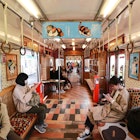
Feb 9, 2024 • 9 min read

Jan 2, 2024 • 11 min read

Dec 17, 2023 • 6 min read

Oct 2, 2023 • 3 min read
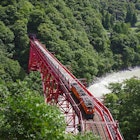
Mar 4, 2023 • 8 min read

Mar 16, 2021 • 6 min read

Feb 17, 2021 • 8 min read

The Man in Seat 61
A beginner's guide to
Train travel in japan.
- Buy train tickets
- Buy ferry tickets
- Book a hotel
- Privacy & cookies
- Home
Train travel UK & Ireland...
Train travel in europe..., train travel in asia..., train travel in africa..., train travel in america..., train travel in australasia, explore japan by rail.
The best way to get around Japan is by train. On this page you'll find an introduction to train travel in Japan, with advice on times, routes, tickets and passes.
Japan Rail pass guide 2024
What are japanese trains like, airport links & other useful info, ferries to & from japan, useful country information, maps of the rail network, how to check train times & fares, the classic network, shinkansen high-speed lines, ordinary class or green car, reserved or non-reserved , busy periods to avoid.
The busy periods when reserved seats sell out way ahead and unreserved cars are very crowded are:
- Golden Week between late April & early May;
- Obon in mid-August;
- New Year from 29 Dec to 3 January.
The most crowded trains tend to be the ones heading out of the big cities into the country at the beginning of the holiday and back into the big cities at the end. If you can, time your visit to Japan to avoid these times. Christmas itself isn't such a big issue in Japan.
If you can't avoid travelling at these busy holiday periods:
Aim for the less popular first & last trains of the day;
Try booking the slower trains such as the all-stations Kodama shinkansen rather than the faster & busier Hikari or Sakura trains;
Try splitting the booking: If you can't get reserved seats from Tokyo to Kyoto, try Tokyo to Nagoya then Nagoya to Kyoto, that may work;
When using unreserved seats, pick a train that starts at the station you're at, not one which comes from elsewhere, already heavily-loaded.
Example journey times & prices
£1 = 180 yen. $1 = 140 yen.
* Nozomi = fastest Shinkansen stopping pattern.
** Hikari = next fastest train type, Japan Rail Passes can be used.
*** Fare by Nozomi with reserved seat.
Check Japanese train times & fares at www.jorudan.co.jp .
Children aged 0 to 5 travel free, children aged 6 to 11 travel at half fare, children aged 12 and over pay full fare.
Rail fares in Japan are expensive, and if you are an overseas visitor a Japan Rail Pass can be the cheapest way to travel even if you are only planning one return trip from (say) Tokyo to Hiroshima. See the Japan Rail Pass section .
Back to top
How to buy tickets
You can of course buy tickets at the station, either at the staffed counters or using ticket machines, these have a touch screen with an English language facility. There are many trains & seats, so buying at the station is unlikely to be a problem unless you hit one of the busy national holiday periods - and even then, you can always travel in the unreserved seats cars.
How to buy local tickets
Use the self-service ticket machines. At any main station you'll find a row of these with a big network map above them near the ticket gates onto the local platforms, see the photo in the Tokyo station section below . You'll soon get the hang of buying tickets, like this:
- Look at the big network map on the wall above the machines. Find your destination station & note the fare shown next to it.
- On the touch screen, press English .
- Press the side button for the number of adults/children in your party. For 2 adults & 2 children you have to buy as 2 transactions.
- You'll now see a screen full of possible one-way fares for one adult.
- Touch the fare for your destination. So if the fare shown on the map against your destination is 350, touch the 350 button.
- It'll now show the total cost for the number of adults & children you have selected.
Japan Rail Pass guide
Japan Rail Pass or point-to-point tickets?
Train fares in Japan are expensive as there are no cheap advance-purchase fares, just one hefty fixed price for each journey. A Japan Rail Pass can save money over point-to-point tickets even for one round trip, if it's a long-distance one. A significant Japan Rail Pass price rise in October 2023 means it's no longer a foregone conclusion, but here are some comparisons after the pass price increase:
A 7-day Japan Rail Pass costs ¥50,000 = £268 or $340 .
The normal return fare from Tokyo to Kyoto is ¥27,940 = £150 or $190.
The normal return fare from Tokyo to Hiroshima is ¥39,120 = £210 or $270.
The normal return fare from Tokyo to Nagasaki is ¥52,620 = £290 or $360.
So a 7-day Japan Rail Pass saves money for one round trip from Tokyo to Nagasaki, but not for a round trip from Tokyo to Kyoto. It may be worth buying a Japan Rail Pass for a round trip from Tokyo to Hiroshima if you do one or more side trips as well.
How to work out if a pass makes sense
First check Japan Rail Pass prices at www.jrailpass.com . Then use japantravel.navitime.com to check point-to-point fares for the journeys you intend to make.
Remember that the total point-to-point price you'd pay = basic fare + the reserved or unreserved seat fee. A pass covers both of these elements, reservations are free.
Big price rise in October 2023
Green car or ordinary class?
A green class pass is great if you can afford it, but ordinary class on Japanese trains is perfectly adequate, there's no need to pay more if you don't want to. Green car simply gets you more leg and elbow room, and carpet rather than synthetic flooring, that's all.
Personally, I find shinkansen ordinary class seats a little cramped where they are arranged 2+3 across the car width, the 2+2 seats in the green car are much more spacious. On the other hand, if you plan to be spontaneous much of the time and not pre-plan everything you'll end up in the unreserved ordinary class cars, so don't fork out for a green car pass if you're not going to use it.
What does a Japan Rail Pass cover ?
You can buy a Japan Rail Pass for 7, 14 or 21 days in either ordinary class or green car (1st class).
The pass gives unlimited travel on all JR trains across the whole of Japan, including high-speed shinkansen (bullet trains), the local, rapid, express and limited express trains on the classic network and even the Narita Express between Narita Airport & Tokyo and the monorail to & from Haneda Airport .
There are just the following exceptions:
You can't use a Japan Rail Pass on lines run by private rail operators , only lines operated by one of the six JR companies. For example, it doesn't cover the Tobu Railway from Tokyo to Nikko, or the Tokyo subway trains which aren't run by JR either.
But it does cover the Narita Express airport train as that's run by JR. It also covers JR local trains in Tokyo & other cities including the useful Yamanote loop line linking Tokyo main station, Ueno, Shinjuku, Shibuya, Shimbashi, Ikebukuro every few minutes, which you can use to get around Tokyo.
Sleeper trains: There there's only one sleeper train left in Japan, the Sunrise Seto / Sunrise Izumo , but you can use this with a Japan Rail Pass if you either pay the hefty sleeper supplement for a private sleeper - we're talking ¥20,000 per room for a private 2-berth B-type sleeper - or use the open-plan shared nobinobi or 'carpet berths' which are free of charge with a Japan Rail Pass, reservation required. Indeed, if you're on a budget, saving a hotel bill by taking the Sunrise Seto between Tokyo & (say) Himeji is an interesting option!
Nozomi or Mizuho shinkansen trains: Until October 2023, Japan Rail Pass holders couldn't use the fastest limited-stop Nozomi or Mizuho category shinkansen trains. You can now use them, but must pay an extra fee, typically ¥4,000-¥6,500 ($27-$44) depending on distance.
You'll find more detailed info at www.jrailpass.com .
How does a Japan Rail Pass work ?
Order your pass & receive a voucher
You order your Japan Rail Pass online at an official pass agency website such as www.jrailpass.com and an exchange voucher is sent by tracked courier to your home address. You'll also get a free Japan rail map and a Japan railways timetable booklet.
You need to buy the pass before you leave home, you can't buy a Japan Rail Pass in Japan.
When you get to Japan, exchange the voucher for the pass
When you arrive in Japan, you exchange this voucher for a Japan Rail Pass at any of the JR ticket offices & travel centres designated as a Japan Rail Pass exchange office.
The voucher can be exchanged for a pass any time within 3 months of buying the voucher, so there's no need to specify exact travel dates when you order it.
There are Japan Rail Pass exchange counters at around 50 JR stations, including Tokyo's main station which has Japan Rail Pass exchange counters on both the Marunouchi (west) & Yaesu (east) sides of the station, Tokyo's Ueno, Shinjuku, Shibuya, Ikebukuro stations, Narita Airport, Haneda Airport, Kansai Airport, Shin-Osaka, Kyoto, Hiroshima, Nagasaki and even Sakaiminato where (if & when operating) the ferry arrives from Vladivostok.
Tip: The Japan Rail Pass exchange counters at Narita and Haneda airports are usually fairly relaxed places to exchange your voucher. In Tokyo the JR East Service Centre in the historic North Entrance on the quieter Marunouchi (west) side of the station is also a good and relaxed place to exchange your voucher, more relaxed than the Japan Rail Pass counter on the more hectic Yaesu (east) side of the station.
When you exchange the voucher, you'll be asked to show your passport and to fill in a simple form with your name and passport number which they incorporate into the pass itself. You'll be asked on what specific date you want the 7, 14 or 21 days to start, this can be any date within the next 30 days - the pass does not need to start on the same day you exchange the voucher for the pass.
For example, in July I booked a flight to Japan for travel in late October. I ordered my 7-day Japan Rail Pass in September. I didn't need to decide in advance exactly what days I would use it, as long as I exchanged the voucher for a pass within 3 months of ordering it. So I could have delayed my visit until November and still used the same voucher. Arriving in Japan on 20 October, I exchanged my voucher for a pass at Tokyo station on 21 October, asking for my 7 days of unlimited travel to start on 22 October.
Then ride as many trains as you want! Once you have your pass and your 7, 14 or 21 days of unlimited travel have started, you use as many JR trains as you like, travelling whenever and wherever you like. There is no limit on the number of trains you can take or the distance you can travel - that's what unlimited means.
Making reservations with your pass
Local & Rapid trains: You don't need a reservation to travel on local or rapid trains on the classic network, such trains don't even have seat reservations. Just hop on and show your pass when the conductor comes along. Easy!
Unreserved seat cars: Express, limited express and shinkansen trains usually have several non-reserved ordinary class cars, as the name suggests you don't need a reservation to travel in these. Platform announcements, departure boards and platform signs in English will tell you which car numbers these are, and where you should stand on the platform for them - it's all very efficient.
If you are happy travelling in the non-reserved cars you can just get on and sit where you like, and show your pass to the conductor when he comes long. Normally there's little problem finding a seat, indeed you may even be spoilt for choice. But a seat isn't guaranteed, and at busy times of day or at busy holiday periods you may have to stand or sit on your luggage in the aisle if you find all the seats are taken.
Reserved seat cars: To be sure of a seat on a shinkansen, limited express or express train, or to sit in a Green Car seat with a Green Car pass, you must reserve a seat in one of the reserved cars.
You are unlikely to have any problem getting the reservations you need, even booking at short notice when you get to Japan, unless you hit a busy holiday period . And even then, you can always use the unreserved cars so you'll never be stranded, although it may be crowded so you may have to stand.
Reserving seats at stations: You can reserve seats this free of charge at any JR ticket office or travel centre where you see the green seat reservation symbol. Just show your Japan Rail Pass and passport and ask for a reservation in the class you want on the train you want. You can make reservations at any time right up to a few minutes before the train leaves.
Reserving seats using a ticket machine: You can also make reservations using self-service ticket machines, these have an English language facility. Select the rail pass option. Select the number of passengers. Then scan the QR code on your Japan Rail pass and enter your passport number, repeating this for each passenger (so you’ll need their pass & passport numbers). You then enter the starting station, destination, date & time and it will find trains and let you choose seats. It will also let you select oversized baggage seats if available. It’ll issue a seat reservation ticket.
You can't make seat reservations before you get to Japan
You can't reserve seats to go with your pass until you reach Japan and can get to a station. There's one key exception: JR East have set up a website for Japan Railpass holders to make reservations on their high speed trains north & east of Tokyo, including the Narita Express and the Joetsu, Tohoku, Hokuriku, Hokkaido, Yamagata & Akita shinkansen, but not the Tokaido, Sanyo or Kyushu shinkansen linking Tokyo, Kyoto, Shin-Osaka, Hiroshima, Hakata, Nagasaki as obviously these aren't run by JR East, but by JR Central & JR West.
To make reservations on JR East services, see www.eki-net.com/pc/jreast-shinkansen-reservation/English/wb/common/Menu (if this link stops working, try www.jreast.co.jp/e/eastpass and please let me know ). Seat reservations made using this service must be collected before 21:00 the day before travel or they will be cancelled.
Green car seats: Green car (1st class) seats on shinkansen & limited express trains are always reserved , if you sit in a green car seat without a reservation you'll be charged the hefty green car shinkansen reserved seat fee, even if you have a Green Car Japan Rail Pass. So if you have a Green Car pass, either make a reservation to use the Green Car, or if you want to be spontaneous and hop on a train without a reservation, use the ordinary class unreserved cars.
Reservation tips
There's no penalty for not using a seat reservation you've made with a Japan Rail Pass. Bad manners not to cancel it perhaps, but if you had a reservation for (say) the 18:45 and decided to leave earlier, you could hop on the 17:45 and sit in the unreserved cars, no problem.
If you know your itinerary, there's no reason why you can't make all the necessary reservations for your trip in one go when you exchange your voucher for the pass. But do the legwork first. Look up each of the trains you want using world.jorudan.co.jp/mln/en then type out a clear written list of reservations specifying date, journey, train number, departure time, class and number of passengers. If it's not too busy, the staff at the Japan Rail Pass counter may work through the list for you, issuing a reservation ticket for each reserved seat. But if it's busy and there's a queue behind you, don't be surprised of they turn you away, asking you to make reservations as you need them at the ticket office. Staff at the JR East Service Centre did all my reservations for me, no problem. But a notice at the Haneda Airport travel service centre said they were only prepared to do reservations for today. Feedback appreciated !
Suggested 7-day itinerary
Click here for my recommended itinerary using a 7-day Japan Rail Pass, starting in Tokyo and visiting Kyoto for its temples & geisha district, Himeji for its castle, Hiroshima for its museum and Peace Park and Nagasaki for its history as the only point of contact with the outside world from the 17th to 19th centuries. I think this is the ideal tour for a first visit to Japan!
Buy a Japan Rail Pass
You need to buy your Japan Rail Pass before you leave your home country as you can't (generally) buy a pass once you're in Japan.
Option 1 buy a Japan Rail Pass at www.jrailpass.com .
Passes can be sent any address worldwide, you can book up to 180 days in advance, prices are shown in various currencies.
Option 2 , buy a Japan Rail Pass at www.jrpass.com .
Also a well-known and popular vendor, in GBP, Euro, USD or AUD, with shipping worldwide.
Option 3 , buy a Japan Rail Pass at www.klook.com , here's a direct link to their all-Japan pass page .
When you buy your pass
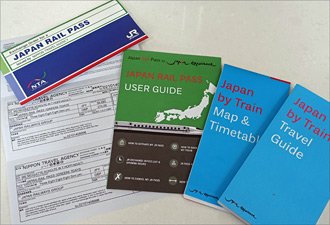
1. Exchange Voucher. When you order your pass online, you are sent an Exchange Voucher (above, on left) plus a handy Japan Rail Pass user guide, a Japan rail timetable and a Japan rail map. The voucher can be exchanged for a Japan Rail Pass at any time in the 3 months after ordering.
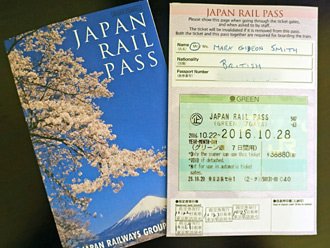
2. Japan Rail Pass. You exchange the voucher for a Japan Rail Pass at any one of 50 designated JR exchange offices in Japan, including Tokyo main station (2 offices), Ueno, Shinjuku, Narita International Airport, Haneda International Airport, Kyoto, Hiroshima, Nagasaki. The photo above shows an old-school pass, from 2023 passes are being issued as credit-card-size card tickets which can operate ticket gates.
Regional rail passes
Japan east pass, sanyo pass, kansai pass.
There are also regional Japan Rail Passes covering smaller areas.
The Japan East Pass covers Tokyo, Nagano, Niigata, Sendai, Morioka, Misawa & Akita.
The JR West Pass covers Osaka-Fukuoka and all trains run by JR West, for 7 days.
The Sanyo area pass covers an area including Osaka, Himeji, Okayama, Hiroshima & Hakata.
The Kansai area rail pass covers Kyoto, Osaka, Kobe, Nara & Himeji and costs only around £15/$23 a day, a pretty good deal.
For more information and to buy a pass , see www.klook.com (passes sent to any address worldwide) or www.japan-rail-pass.com .
Seishun 18 Kippu
The Seishun 18 Kippu (Youthful 18 Ticket) gives 5 days unlimited travel on Japan Railways' local trains and kaisoku (accelerated local) trains for ¥12,050, about $97 or $20 per day. It's possible to travel all the way across Japan this way, incredibly cheaply, but only using the narrow-gauge local trains.
It's sold to both Japanese citizens and overseas visitors of any age (in spite of its name), but only during specific Spring (March-April), Summer (July-September) & winter (December-January) periods.
Rather than explain it further here, see this page for details: www.japan-guide.com/e/e2362.html or en.wikipedia.org/wiki/Seishun_18_Ticket or www.jreast.co.jp/e/pass/seishun18.html . Update: Most online info seems to have disappeared, but in March 2024 it's confirmed that the pass still exists if you buy in Japan.
1, 2 & 3-day metro passes for Tokyo
Foreign visitors can buy Tokyo metro 24 hour, 48 hour & 72 hour tickets, see www.tokyometro.jp/en/ticket/travel .
If you like, you can buy a 1/2/3 day Tokyo metro pass online in advance at www.klook.com and collect it from the metro ticket machines.
You can buy one-day passes covering the Tokyo metro, or Tokyo metro+Toei Subway+JR local trains (called the Tokyo Combination ticket), see www.tokyometro.jp/en/ticket/value/1day .
What are Japanese trains like ?
Shinkansen high-speed trains.
Everyone has heard of Japan's bullet train lines, more properly known in Japan as shinkansen which means new trunk line . These are high-speed lines, built to European and North American standard gauge with rails 4' 8½" apart. The first shinkansen was the Tokaido Shinkansen opened in 1964 between Toyo, Kyoto and Osaka, later extended as the Sanyo Shinkansen to Hiroshima, Kobe and Hakata. There are now a whole range of shinkansen lines linking all the most important cities in Japan, including Niigata, Tokyo, Kyoto, Osaka, Hiroshima, Hakata and Kagoshima.
Tokaido & Sanyo shinkansen N700A
These 16-car N700As owned by JR Central & JR West operate the Nozomi and Hikari services on the Tokaido Shinkansen between Tokyo, Kyoto and Shin-Osaka. Many Nozomis and a few Hikaris extend to Hiroshima, Kobe & Hakata over the Sanyo Shinkansen. These trains operate at up to 285 km/h (175 mph) on the Tokaido Shinkansen and up to 300km/h (186 mph) on the Sanyo Shinkansen.
Shinkansen seats are always rotated to face the direction of travel, and all seats come with a drop-down table attached to the seat back in front. If there are four of you, you can rotate one pair of seats to make a face-to-face group of four. There are power sockets (Japanese 2-pin) at all seats on these N700s.
Sanyo & Kyushu shinkansen N700
These 8-car N700 shinkansen trains owned by JR West & JR Kyushu operate the Mizuho & Sakura services on the Sanyo & Kyushu shinkansen lines between Shin-Osaka, Hiroshima, Himeji, Hakata and Kagoshima.
On most shinkansen trains, ordinary class seats are the same whether reserved or non-reserved. But on these particular trains, ordinary class reserved seats (above left) are arranged 2+2 across the car width, much more spacious than the non-reserved cars (above right). An added benefit of reserving a seat!
Joetsu, Tohoku, Hokuriku, Hokkaido, Yamagata & Akita shinkansen
You'll find a range of exotic trains on the Joetsu, Tohoku, Hokuriku, Hokkaido, Yamagata & Akita shinkansen routes heading north & east of Tokyo.
Limited Expresses
An extensive network of classic 3' 6" narrow-gauge lines covers the whole of Japan taking you to almost every city and town of any size. The fastest trains on the classic network are classified Limited Express , and these train come in all shapes and sizes. Indeed, the classic network often parallels the shinkansen: For example, you can travel between Kyoto, Osaka and Himeji by Limited Express on the classic network just as easily as by shinkansen. Give it a try!
Local & rapid trains
Completing the picture, there are many local & rapid trains on the classic 3' 6" narrow-gauge network, again of many shapes and sizes.
Sleeper trains : See the video
There's now only one sleeping-car train left in Japan, the Sunrise Express . It runs as one combined train from Tokyo to Himeji & Okayama and then splits, the Sunrise Seto heading for Takamatsu on the island of Shikoku and the Sunrise Izumo heading for Izumoshi.
You can use the Sunrise Express at no extra charge with a Japan Rail Pass if you make a reservation for one of the basic nobinobi berths (see the photo below left) or you can pay the room fee to have a private compartment. Expect a private sleeper compartment for one person to cost around ¥8,000 for a B-type single , around ¥7,000 for a similar but slightly smaller B-type solo , or ¥15,000 for a more spacious A-type deluxe single-bed sleeper with washbasin. For two people, it costs around ¥15,000 per compartment in a B-type single-twin with upper & lower berths or ¥16,000 per compartment in a B-type Sunrise twin with two lower berths side by side. Without a pass, you pay the regular fare and limited express extra fare plus these berth costs.
The sleeper train runs on the classic narrow-gauge network, but it can save time compared with daytime shinkansen travel but more importantly it's a unique experience, watch the Sunrise Express video . It could save a hotel bill too! See the official Sunrise Express information page , in Japanese, translatable with Google Chrome, to see photo of each accommodation type and check current berth fees.
Travel tip: Himeji is a popular destination, but the Sunrise Express arrives there very early westbound and leaves late at night eastbound. Remember that with a Japan Rail Pass you can easily double back, leaving or boarding the train an hour away in Okayama at a more attractive time instead. The useful Tokyo-Nagasaki sleeper train is long gone, and the Hokutosei & Cassiopeia sleeper trains between Tokyo & Sapporo disappeared in late 2015/early 2016 with the expansion of high-speed shinkansen services to Hokkaido.
Travel tips
Ticket gates.
When entering (or leaving) the platform area at any principal Japanese station, you'll need to pass through a set of automatic ticket gates like the ones shown here. To catch a shinkansen train you may need to pass through two sets of gates, the first to access the JR Lines platform area serving the classic network, then another to access the Shinkansen platforms. The gates are usually open by default, they'll spring shut if you try to pass through without a ticket. All gate lines have a staffed side-gate, and if you have an old-style Japan Rail Pass you'll need to use this. Just flash your pass at the side gate and you'll be waved through. However, Japan Rail Passes are now being issued in the same format as normal magnetic-stripe card tickets, and passes in this format will operate the gates.
Finding your platform, train & seat
Many visitors worry about language in Japan, but signs are in both Japanese and English and the system is so efficient and easy to use. The photos below show how easy it is to find the right platform, stand in the right place for your car when the train comes in, and be sure you're getting on the right train.
Tip: The board also tells you which cars are unreserved. If you want to use Sakura 557 without a reservation, you can see that cars 1-3 are the non-reserved ones.
Luggage on Japanese trains
Luggage is no real problem on Japanese trains. Within reason, you can take what you like, nobody weighs it, measures it or argues about it. You simply take it with you onto the train and stick it on any suitable luggage rack. The overhead racks on shinkansen trains take anything up to backpack size. If you have a huge suitcase or don't want to lift heavy bags to the overhead rack, go to the back of your car and put your bags in the gap between the wall and the rearmost seats, as in the photo below right.
Rules for very large suitcases from 2020
Extra large luggage rules have applied to the Tokaido, Kyushu & Sanyo shinkansen lines since May 2020. Passengers with very large suitcases over 160 linear centimetres (linear cm = length + width + depth) will have to reserve a place for their suitcase at the same time they reserve their shinkansen seat, it's free of charge. But if they don't reserve, they face a ¥1,000 fine (about $8) on the train. It will no longer be possible to travel in an unreserved seats car with very large suitcases. The suitcases will go in behind the rear row of seats, or (when modifications are completed) in a new lockable luggage area which will replace some of the washbasins in designated cars. Obviously, the 160cm cut-off means this won't affect backpacks or normal-sized luggage, just over-sized cases. For more details see www.tsunagujapan.com/large-suitcases-shinkansen-policy .
Luggage lockers at stations
All principal stations have luggage lockers in various sizes in various locations. Expect a small locker to start at around ¥300 or ¥400, and you'll need coins. It's not usually difficult to find vacant lockers at any time of day. Below right, arriving in Himeji at lunchtime it was no problem to find a vacant large locker which took two backpacks and a holdall for ¥700. There's also a small staffed left luggage office at Tokyo station, inside the Marunouchi central entrance inside the JR Lines gated area.
Food on board: Eki-ben
First the bad news. Japanese trains don't have restaurant cars or even a bar car, just vending machines and in some cases a refreshment trolley. The trolley on premier shinkansen trains such as Nozomi, Hikari, Mizuho or Sakura services sells tea, coffee, soft drinks, wine, beer, sake, snacks, small tubs of ice cream. The trolley accepts both cash and credit cards.
Now the good news. You can of course take your own food and drink onto Japanese trains, and one of the joys of Japanese train travel is the ekiben - eki meaning station, ben short for bento , meaning traditional Japanese packed lunch. Ekiben is sold at ekiben shops found at all main stations, and also from the refreshment trolley on principal shinkansen services. Ekiben comes in all sizes, shapes and qualities, but expect a decent large box to cost perhaps ¥800 bought at the station or ¥1,000 bought from the trolley on board a train. The ekiben boxes include chopsticks and finger wipes.
If you want to buy ekiben from the shinkansen refreshment trolley, just ask the trolley lady - she'll show you pictures of the what she has available in a little laminated menu booklet, just point to the one you want. You'll soon be a Black Belt in the ancient and honourable Japanese martial art of Eki-ben...
Power sockets & WiFi
You can reckon on finding power sockets for standard Japanese plugs at seats on almost all shinkansen and most limited expresses. Free WiFi is now available on most shinkansen routes including the Tokaido, Sanyo & Tohoku lines. Check your mobile provider for a data package for Japan, there is good mobile data reception along most shinkansen routes. You'll also find JR Free WiFi at a key stations including Tokyo, Shinagawa, Nagoya, Kyoto & Shin-Osaka.
Tokyo station : See location map
Tokyo's main central station is shown as plain Tokyo in timetables. Unlike most main stations worldwide, Tokyo station lacks a main entrance and main concourse. It's something of a rabbit warren, but as most visitors end up there sooner or later, here are some tips. You can read more about the station and its history at en.wikipedia.org/wiki/Tokyo_Station . It's the busiest station in Japan in terms of trains, though not in terms of passenger numbers.
The west side of the station is called the Marunouchi side , and it features the historic station building built in 1915 and now beautifully restored, with it's upper floors housing the wonderful Tokyo Station Hotel . It's the quieter side of the station, close to the Imperial Palace.
There are Marunouchi North, Central & South entrances, each with a row of ticket gates to access the JR lines (classic network) platforms 1-10. If you are catching a shinkansen, you'll need to pass through one of these gatelines and cross the JR Lines area to another set of ticket gates at the entrance to either the Tokaido/Sanyo shinkansen platforms 14-19 or the Joetsu, Tohoku, Hokuriku, Hokkaido/Yamagata & Akita shinkansen platforms 20-23. It's all well-signed in English.
Which platform?
Tokyo station, marunouchi side, tokyo station, yaesu side.
Buying local tickets in Tokyo. There's a row of ticket machines like this near every entrance to the platform area.
The yellow & green machines on the left sell Shinkansen & Limited Express reserved & unreserved tickets & reservation changes.
One-day metro & local train passes for Tokyo: There are 1-day passes you can get to cover either metro trains or metro trains + JR local trains in the Tokyo area. You need to clock up perhaps 5 or 6 journeys in a day to make one of these worthwhile. See www.tokyometro.jp/en/ticket/value/1day .
The Tokyo Station Hotel : Check prices
The lovely 5-star Tokyo Station Hotel is another unique place to stay that deserves a special mention, even if (unlike capsule hotels) it's not a budget option! The hotel occupies the 2nd & 3rd floors of the historic and beautifully-restored 1915 station building on the quieter Marunouchi side of Tokyo station. Given that so many of Tokyo's classic hotels have been destroyed by earthquakes or wartime bombing then rebuilt as modern tower blocks, this has to be one of the most historically-interesting places to stay. It's a luxurious and well-located choice, too, with a first-rate breakfast buffet served in the Atrium located inside the large central pitched roof above the 3rd floor. And it's so handy for the trains.
Ryokans & capsule hotels
Any visit to Japan is a cultural experience. Don't just stay in western hotels and visit the sights. Make the places you stay part of the experience, by staying in a traditional Japanese ryokan, or even a capsule hotel.
Ryokans are traditional Japanese inns. The rooms don't have beds, the floor is covered with tatami matting on which you place a bedroll. You may be offered a hot cup of green Japanese tea when you first arrive. You can sometimes find ryokans online on hotel booking sites such as www.booking.com . The very best and most famous ryokans can be fabulously expensive, but cheaper ones can be a budget option. Search for Ryokans in Tokyo . Search for Ryokans in Kyoto .
In Kyoto, the excellent Gion Ryokan Q-Beh (pictured above) is 10-15 minutes walk from the Kyomizu-dera temple, 10 minutes walk from the Gion Geisha district. It has budget dorm rooms and private rooms, and free WiFi. The photos above show a family room with shower & toilet.
In Hiroshima, try the Chizuru Ryokan , 10 minutes walk from the Peace Park.
Capsule hotels
Another classic Japanese experience is to spend a night in a capsule hotel - which coincidentally is also a money-saving option for staying a night in the heart of Tokyo or another big city. These are more civilised than you might think.
The hotel reception looks like any other hotel reception. Remember to take your shoes off before you walk in, and place them in one of the lockers in the lobby. Upstairs, there will probably be several floors of fibreglass sleeping capsules, each floor with its own locker room and shared showers. You change in the locker room and put your clothes and bags into your locker. Your capsule has radio, alarm clock and TV, and a screen or curtain pulls over the capsule entrance for privacy. The main drawback is that the main clientele for these hotels is Japanese businessmen who have missed their last train home, so capsule hotels are usually male-only. But capsule hotels for women do exist. The pictures below show end-entry capsules, but some capsule hotels have side-entry types, and you'll now find some capsule hotels with larger, more hotel-style capsules too.
You can usually walk into a capsule hotel and ask for a bed for the night, but if you want to pre-book this unique experience, try the Capsulevalue Kanda in downtown Tokyo near Kanda station, one stop north of Tokyo station, a bed in downtown Tokyo for as little as ¥3,400 (about £26 or $32) per night. Men and boys over 10 can stay there, but not women or children.
Haneda Airport to Tokyo
Emerging into the Haneda Airport International Arrivals hall, follow the signs to the Monorail which is just a few metres straight ahead of you.
Narita Airport to Tokyo
Option1, narita express to tokyo main station, option 2, keisei skyliner from narita to ueno station, cheaper options, europe to japan by trans-siberian railway.
You can travel from London to Tokyo in just 12-14 days by Trans-Siberian Railway for roughly £800 in round figures.
Update 2024 : War in Ukraine & sanctions on Russia currently make this route impractical. Moscow-Beijing trains are suspended.
Option 1, via Vladivostok
- Travel from London to Moscow, see the London to Russia page . This takes 48 hours using the Paris-Moscow Express .
- Take the Rossiya from Moscow to Vladivostok, this runs every second day taking 7 days, see the Trans-Siberian page .
- Take the ferry from Vladivostok to Sakaiminato in Japan, sailing once a week taking 36 hours, see the Vladivostok-Japan ferry section .
Option 2, via Beijing & Shanghai
- Travel from Moscow to Beijing on one of two weekly Trans-Siberian trains, taking 6 days, see the Trans-Siberian page .
- Take an overnight or high-speed train from Beijing to Shanghai ( see the Beijing to Shanghai page ).
- Take one of the two weekly ferries from Shanghai to either Osaka or Kobe in Japan, see the China to Japan ferry section .
Going via Vladivostok is simpler to organise as you need fewer visas, but going via Beijing more varied and interesting, and the one I'd recommend.
Ferries between Japan & China, Korea, Vladivostok
For the weekly ferry from Sakaiminato in Japan to Vladivostok in Russia, see the Trans-Siberian page .
For ferries between Japan and Shanghai in China, see the China page .
For ferries between Japan and South Korea, see the Korea page .
Tours of Japan by train
If you want a tour agency to organise a tour of Japan for you with train travel, transfers & hotels included as a package, Railbookers specialise in train-based tours and have several suggested tours of Japan by rail, including Best of Japan, Scenic Japan and Golden Route of Japan. These can be adjusted to your specification.
UK call 0207 864 4600, www.railbookers.co.uk .
us call free 1-888-829-4775, www.railbookers.com ., canada call free 1-855-882-2910, www.railbookers.com ., australia call toll-free 1300 971 526, www.railbookers.com.au ., new zealand call toll-free 0800 000 554 or see website ..
Japan by Rail & Lonely Planet guides: In the age of the internet, a printed guidebook may seem an unnecessary expense, but you'll see so much more and know so much more about it if you have a decent pocket guidebook. The Trailblazer Japan by Rail guide is specifically aimed at train travel around Japan, with both city and train information - highly recommended! Other than that, for the serious independent traveller, the best guidebooks to take are either the Lonely Planet or the Rough Guide. I personally prefer the layout of the Lonely Planet, but others prefer the Rough Guides. Both guidebooks provide excellent levels of both practical information and historical background.
Click the images to buy online at Amazon.co.uk
Flights to japan.
Overland travel around Japan by train is an essential part of the experience, so once there, don't cheat and fly, stay on the ground! But a long-haul flight might be unavoidable to reach Japan in the first place.
1) Check flight prices at Opodo, www.opodo.com
2) use skyscanner to compare flight prices & routes worldwide across 600 airlines....

Travel insurance & other tips
Always take out travel insurance.
Never travel overseas without travel insurance from a reliable insurer, with at least £1m or preferably £5m medical cover. It should also cover cancellation and loss of cash and belongings, up to a sensible limit. An annual multi-trip policy is usually cheaper than several single-trip policies even for just 2 or 3 trips a year, I have an annual policy with Staysure.co.uk myself. Here are some suggested insurers. Seat61 gets a small commission if you buy through these links.
Get an eSIM with mobile data package
Don't rely on WiFi, download an eSIM with a mobile data package for the country you're visiting and stay connected. Most newer mobile phones can download a virtual SIM card so you don't need to buy a physical SIM, including iPhone 11 & later, see device compatibility list . Maya.net is a reliable eSIM data retailer with a 4.5 out of 5 Trustpilot rating and a range of packages including unlimited data .
Get a Curve card for foreign travel
Most banks give you a poor exchange rate, then add a foreign transaction fee on top. A Curve MasterCard means no foreign transaction fees and gives you the mid-market exchange rate, at least up to a certain limit, £500 per month at time of writing. The money you spend on your Curve card goes straight onto one of your existing debit or credit cards.
How it works: 1. Download the Curve app for iPhone or Android . 2. Enter your details & they'll send you a Curve MasterCard - they send to the UK and most European addresses. 3. Link your existing credit & debit cards to the app, you can link up to two cards with the free version of Curve, I link my normal debit card and my normal credit card. 4. Now use the Curve MasterCard to buy things online or in person or take cash from ATMs, exactly like a normal MasterCard. Curve does the currency conversion and puts the balance in your own currency onto whichever debit or credit card is currently selected in the Curve app. You can even change your mind about which card it goes onto, within 14 days of the transaction.
I have a Curve Blue card myself, it means I can buy a coffee on a foreign station on a card without being stung by fees and lousy exchange rates, just by tapping the Curve card on their card reader. The money goes through Curve to my normal debit card and is taken directly from my account (in fact I have the Curve card set up as payment card on Apple Pay on my iPhone, so can double-click my phone, let it do Face ID then tap the reader with the phone - even easier than digging a card out). I get a little commission if you sign up to Curve, but I recommend it here because I think it's great. See details, download the app and get a Curve card , they'll give you £5 cashback through that link.
Get a VPN for safe browsing. W hy you need a VPN
When you're travelling you often use free WiFi in public places which may not be secure. A VPN encrypts your connection so it's always secure, even on unsecured WiFi. It also means you can select the geographic location of the IP address you browse with, to get around geoblocking which a surprising number of websites apply. See VPNs & why you need one explained . ExpressVPN is a best buy with a 4.7 out of 5 Trustpilot ranking which I use myself - I've signed up as an ExpressVPN affiliate, and if you go with expressvpn.com using the links on this page, you should see a special deal, 3 months free with an annual subscription. I get a small commission to help support this site.
Carry an Anker powerbank
Tickets, reservations, vaccination records and Interrail or Eurail passes are often held digitally on your mobile phone, so it's vital to keep it charged. I always carry an Anker powerbank which can recharge my phone several times over if I can't get to a power outlet. Buy from Amazon.co.uk or from buy from Amazon.com .
Back to home page

Welcome to JPRail.com

JPRail.com offers the resources of the train travel in Japan. I show you the major train guide, a lot of rail passes, how to reserve a seat, how to find the timetable, the access guide to major destination by train and/or bus, sample itineraries, my travel report and many more. Please find the page index below to exlpore JPRail.com.
Future outlook on travel ban
I summarized all information about the current situation about the travel to Japan in the post below:

If you are planning your trip plan now
I recommend you to read the following posts. This is very important to avoid traveling in busy season.

Popular posts

List of rail pass
- JR Pass user guide
- Hokkaido Rail Pass
- Tokyo Wide Pass
- Platt Kodama
- Takayama Hokuriku Area Tourist Pass
- Kansai Thru Pass
- Kansai Hiroshima Area Pass
See full list.
Timetable, reservation
- List of timetable
- How to reserve a seat
- How to choose reserve seat or non reserve seat
- Regular ticket rule
See full list .
Sample itineraries
- Day trip to Hakone and Fuji from Tokyo
- Day trip to Hiroshima and Miyajima from Osaka
- Tokyo, Hakone, Kyoto, Osaka
- Tokyo, Kyoto, Osaka 7 days
- Kyoto and Osaka 5 days
JR trains list
- The limited express Thunderbird
- The limited express Wide View Hida
- Tokaido, Sanyo Kyushu Shinkansen
- Tohoku-Hokkaido, Akita, Yamagata Shinkansen
- Overnight train Sunrise Seto
See full list
My trip report
- Koyasan and Wakayama 2 days
- Sapporo, Furano, Biei, Noboribetsu, Toya and Hakodate 4 days
- Hiroshima, Kakunodate, Yamadera, Magome, Matsumoto, Kanazawa, Shirakawago, Takayama and Nagano 6 days
Destination guide
- Tokyo train network guide
- Hakone access guide
- Lake Kawaguchi access guide
- Nikko access guide
- Nagano, Matsumoto, Shishu region access guide
- Kanazawa and Toyama access guide
- Takayama access guide
- Kansai train network guide
Station guide
- Shin-Hakodate-Hokuto
Airport access guide
- Narita airport
- Haneda airport
- Kansai airport
- Chubu airport (Centrair)
- New Chitose airport
- Fukuoka airport
- Itami airport
Travel tips
- Signage in the station and the train
- How to handle luggage on board
- Eat and drink on board
- Wi-Fi connection
Train operation status
This page show you the closed segment by the natural disaster
Please see the information here.
About JPRail.com
JPRail.com is a private website. This website does not connection with any train companies.
Read more about JPRail.com .
Latest comment
I will answer your inquiry quickly. Please do not hesitate to leave your comment. You may leave your comment at any posts. Otherwise please leave your comment in Forums page .
Hi Joe san, At this point, I have no id…
Hi Takeshi-san, Do you think JR East wi…
Hi German, When Japan opens the border …
Hi Takeshi, I apologise if something …
Hi CK, Yes, you can do it. Hope things …
Boutique Japan
Getting Around Japan: A Complete Guide to Train Travel
Japan’s railway system, including its world-renowned shinkansen (bullet train), is famously clean, safe, modern, and efficient. But to a first-time visitor, getting around Japan can also seem a bit confusing — especially at first.
Don’t worry if the idea of navigating Japan by train feels a little overwhelming to you now. After you read this introductory guide to train travel in Japan, you’ll be ready to:
- Use an IC transport card to navigate the Tokyo Metro subways (and buy drinks at vending machines)
- Understand the difference between Japan Railways (JR) and other railway companies operating throughout the country
- Purchase train tickets — and avoid some of the most common mistakes most travelers make –– including how to read shinkansen timetable
- Decide whether to reserve ordinary, Green Car, or Gran Class seats
- Map out your travel plans utilizing a combination of shinkansen , limited express trains, and local trains
There’s no shame in feeling daunted by Japan’s extensive network of trains and rail operators, veritable web of stations, and dozens of different types of trains. But after experiencing Japan’s wonderful rail system for yourself, you’ll find it’s an absolute joy to travel by train in Japan!
Also, as if it weren’t enough that the trains are spotless (and run on time), it’s also worth remembering that Japanese people are extraordinarily helpful. If you are ever lost or in doubt, simply find the nearest station attendant and ask for help — unlike in many countries, they’ll actually be happy to assist (one of the many amazing things about Japan )!
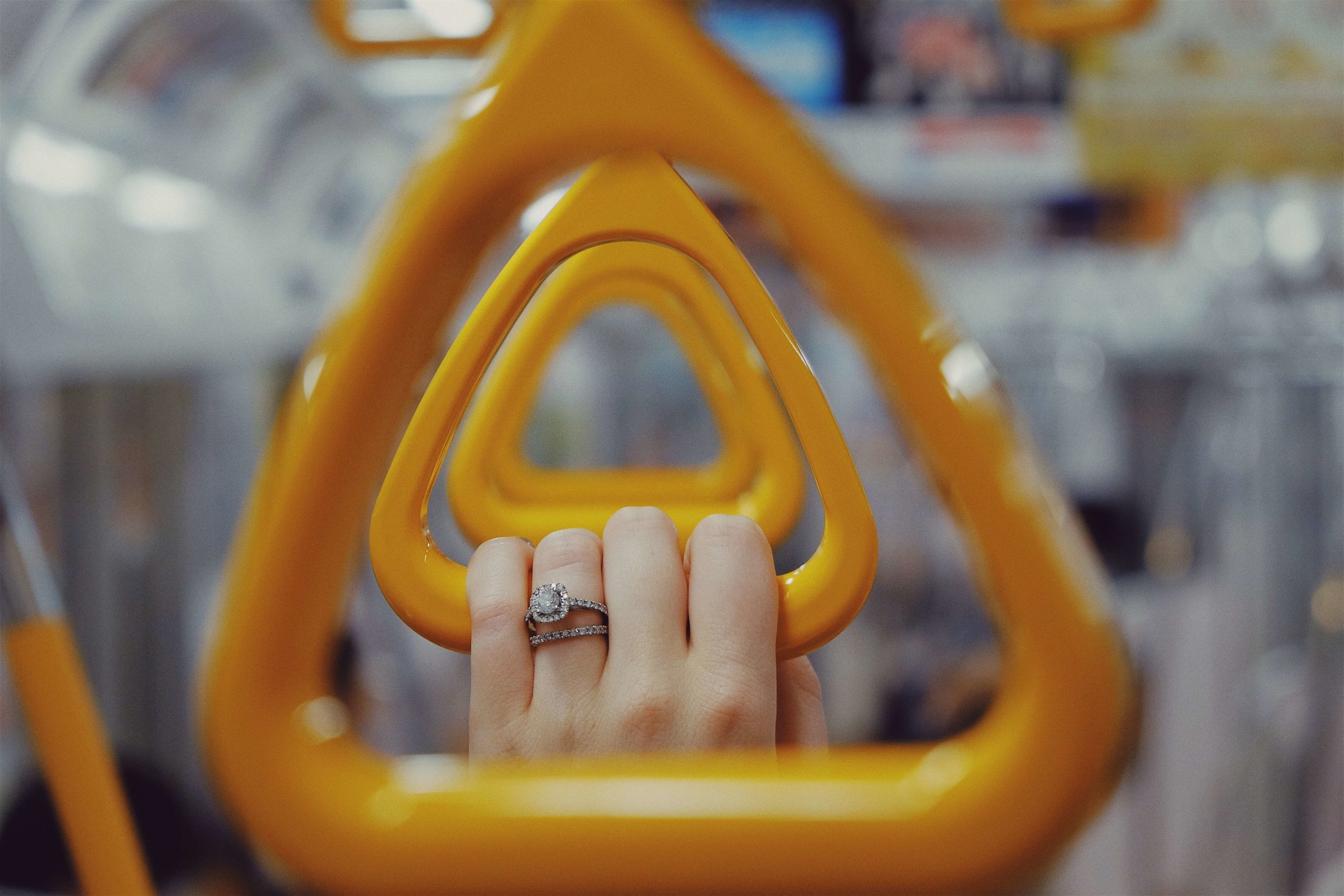
Guide to Train Travel in Japan
If you’re not sure where to begin, we suggest starting at the top. But if you’re wondering about a specific topic, refer to the Table of Contents below:
Types of Trains (Train Categories)
Ic cards (refillable transport passes), how to buy train tickets in japan, how to use train tickets in japan, planning your journey (and japan travel apps), useful rail and transport passes, non-train travel in japan.
Let’s be honest: The terminology below may not sink in for you immediately, but as you read the rest of this article, it should come in handy.
In Japan, as in any other country with a robust rail network, there are various types of trains, ranging from slower to faster. The classifications can get painfully specific in Japan, but for most travelers, it’s not necessary to get into excessive detail.
To avoid overwhelming you, here is a brief summary of the main types of trains you will encounter while traveling around Japan, in order of relative speed:
- Express (急行)
- Limited Express (特急) / Special Express (特急)
- Shinkansen (Bullet Train) (新幹線)
If you want to nerd out, here is an excellent guide to the various types of trains in Japan .
You don’t need to do anything with this information yet. Just keep this in mind as we proceed. All aboard!

Let’s start with the single easiest “travel hack” that will make your trip to Japan smoother and more pleasant: obtaining an IC card.
If there is one thing you can do to make exploring a city easy, it’s getting that city’s version of a transit card. Some well-known examples include London’s Oyster card, Hong Kong’s Octopus card, and New York City’s MetroCard.
In most ways, Japan’s IC cards put them all to shame.
IC cards are rechargeable passes that you can use to pay fares on public transportation. You can also use them to buy drinks and snacks at most conbini (convenience stores) and vending machines.
Japan’s IC cards come by different names across Japan, with several regional variants. Most travelers to Japan are likely to come into contact with the Suica, PASMO, or ICOCA cards, but they are essentially all interchangeable.
For example, if you have a PASMO (issued by Tokyo Metro), you can still use it on trains in other cities (for example, in Osaka). Or say you have an ICOCA (issued by JR West, where Kyoto and Osaka are located): Fear not, as you can use it elsewhere, including in Tokyo, for example.
Imagine being able to use your New York MetroCard in Boston or San Francisco!
You don’t strictly need an IC card. If you prefer inconvenience (why?!), you could simply buy tickets each time you need to hop on the subway.
But if you favor simplicity and ease of travel, an IC card is essential. With an IC card, you can explore much more freely, seamlessly switching between trains and buses, and even different railway companies.
IC cards are also easy to refill. On occasion, you may reach the end of your journey, perhaps after an evening exploring Tokyo nightlife , only to find that you don’t have enough credit to exit the station.
Don’t worry! There are always “fare-adjustment” machines in the vicinity of the ticket gates, where you can top up as needed.

IC cards are ideal for short-distance travel and an essential part of getting around within cities in Japan. Referring back to the types of trains introduced above, IC cards are generally useful for these types of trains:
But for the following types of trains — this includes longer journeys and most intercity travel — you’ll need train tickets, or a rail pass:
Do You Need the Japan Rail Pass?
One of the most persistent myths about traveling in Japan is that the Japan Rail Pass is a must. We won’t bore you with all the details, but the short answer is that it’s not.
Yes, it’s true that the Japan Rail Pass can be the best option in certain circumstances (and it’s often ideal for budget travelers). But for travelers who prioritize convenience and comfort, the Japan Rail Pass is rarely the best option.
For more information on its pros and cons, check out our Japan Rail Pass guide .
Where to Buy Train Tickets in Japan
The easiest place to purchase train tickets is typically at your local station. In Japan, there are countless railway companies, with routes crisscrossing the country. But one railway company stands above them all: Japan Railways .
While traveling around Japan, it is likely you’ll come across other companies including Tokyo Metro, Keikyu, Odakyu, Tokyu, Hankyu, Kintetsu, and many others. But for most long-distance trips — including via the shinkansen (bullet train) — you’ll be on JR.
In major cities, most large stations have a ticket office (at JR stations, they’re called Midori no Madoguchi ) where you can speak with an agent to purchase the tickets you need. While you may feel daunted by the Japanese language barrier , most ticket agents are used to helping non-Japanese speakers, so don’t worry!
If you’d rather try your luck at an automated ticket machine, there is usually an option to go through the process in English. JR West has a useful video and visual guide to purchasing train tickets .

Types of Train Tickets in Japan
Now that you’re ready to buy your tickets, a little train ticket terminology may help you make the right choices.
Reserved Versus Non-Reserved Tickets
If you’re traveling solo, or on a tight budget, then you may want to consider non-reserved seats.
Most bullet trains have a few non-reserved carriages, and finding a seat is usually not too challenging — provided you’re traveling on a busy route with frequent trains, it’s not peak season, and your travel party is small (naturally, if you’re traveling in a party of two people or more, you may not be able to sit together).
For most travelers, reserved seats are the way to go.
Classes of Service: Ordinary, Green Car, and Gran Class
Even ordinary class in Japan is of a very high standard, but if you’re looking for a bit of extra comfort, you may want to consider splurging on Green Car or Gran Class seats.
As you might expect, ordinary car seats are clean (the usual, in Japan), and they’re also surprisingly spacious. But if you’re looking for more space, consider springing for Green Car. In the Green Car, you have a bit more space (ordinary class seats are laid out in 3×2 configurations, while Green Car seats are 2×2).
Generally speaking, even ordinary car seats have electrical outlets, but on the whole, the higher-category seats are most likely to have electrical outlets and heated seats (it can vary by train).
We recommend browsing for ekiben (bento boxes designed for train travel) before departure. In most stations, you’ll find a colorful array of fresh, beautifully packaged meals to enjoy on the train, including local and seasonal specialties.
As for Gran Class: This is a whole different experience altogether. Gran Class cars have their own attendant, and come with lovely bento lunch boxes, and unlimited drinks (including beer, sparkling wine, sake , Japanese whisky , and more). The seats are also extra plush and spacious.
Unfortunately, most bullet trains don’t yet have Gran Class carriages, but more are being added to cater to demand!
For “advanced studies,” check out JR East’s detailed chart on the various types of tickets .
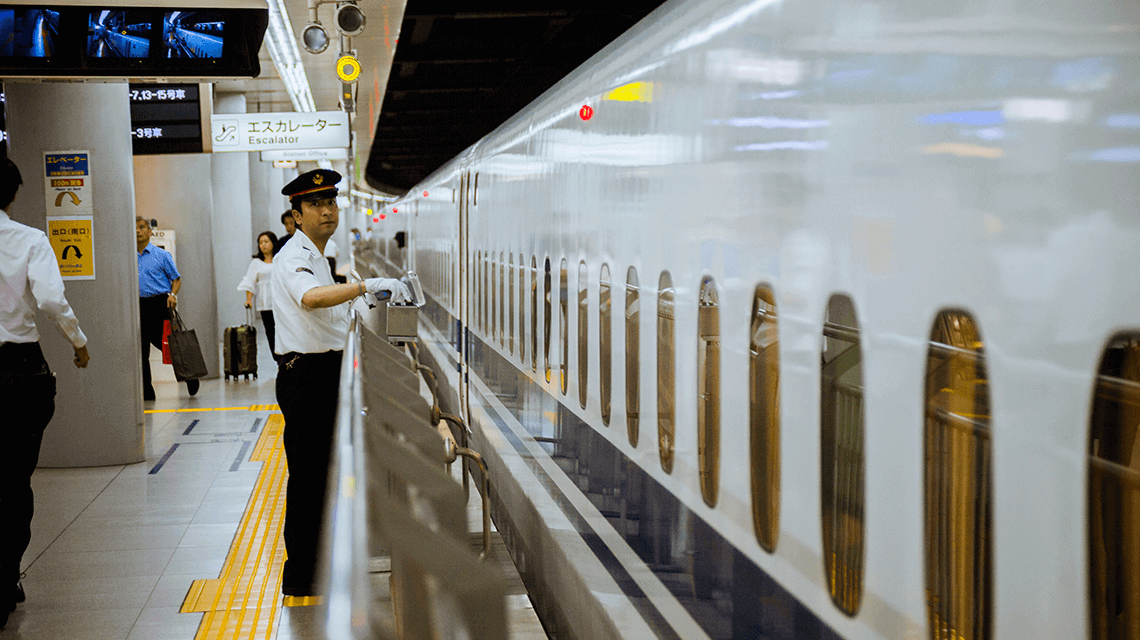
You have tickets in your hand. Now what?
Japan Train Ticket Dos and Don’ts
Tip 1: hold onto — i.e., don’t lose — your ticket(s).
This is not the New York subway! When riding trains in Japan, you always need your tickets for the whole journey.
Here’s how it works:
- When entering the station, insert your ticket at the ticket gate. It will pop back up at the other end almost immediately.
- Walk through the open gate and retrieve your ticket.
- At the end of your journey, insert your ticket into the exit ticket gate.
- This time, you can walk right through (your ticket stays in the machine).
The general rule is: If you haven’t left a station yet, you should still have your ticket on you.
Warning: If you get to the end of your journey and you’ve lost your ticket, there’s a good chance you’ll be asked to pay for the entire journey again.
Another reason you shouldn’t lose your ticket: Train attendants may ask to see your ticket while you’re on the train, so keep it handy.
Tip 2: Deal With Multiple Tickets
This is something that probably won’t make sense to you until you get to Japan … and then you’ll see what we mean!
For many long-distance journeys — for example, on the shinkansen or limited express trains — you’ll be provided with more than one ticket.
One of them is a joshaken (乗車券), or “base fare ticket,” which is essentially the basic fare from point A to point B. The other is a tokkyuken (特急券), or “special fare ticket,” which tells the ticket machine or agent that you’ve paid for the privilege of riding an extra-fast train, such as a bullet train or an express train.
You need both tickets!
The counterintuitive part for most travelers is what to do when passing through the ticket gates. Which ticket do you insert? The answer is both, simultaneously.
Simply insert both tickets into the gate at the same time. The machine will automatically process the tickets, and one or both will pop out at the other end. Retrieve the ticket(s) and proceed to your train.
Then remember tip 1 above. When you reach your destination, you’ll once more put the ticket(s) into the exit ticket gate to be on your merry way.
If you’re ever in doubt, simply ask a station attendant for help!
Tip 3: Know Your Train Number
Your train ticket contains a plethora of information, and much of it may be undecipherable if you don’t read Japanese. But you’ll also find plenty of useful information here, including travel times, plus your train and seat number.
After reaching your departure train’s platform, you’ll want to go ahead and make your way to the proper boarding point. Train and bullet train doors always open at the right place on the platform, and you’ll see car numbers labeled clearly on signs above and on the floor in front of the train doors.
When it comes to shinkansen platforms, keep in mind that they’re extremely long, so it’s not a bad idea to head to your boarding spot a little early … walking from one end of the platform to the other can take as long as 10 minutes or more.
Once you reach your spot, enjoy the delightfully orderly queues before boarding the train and finding your seat.
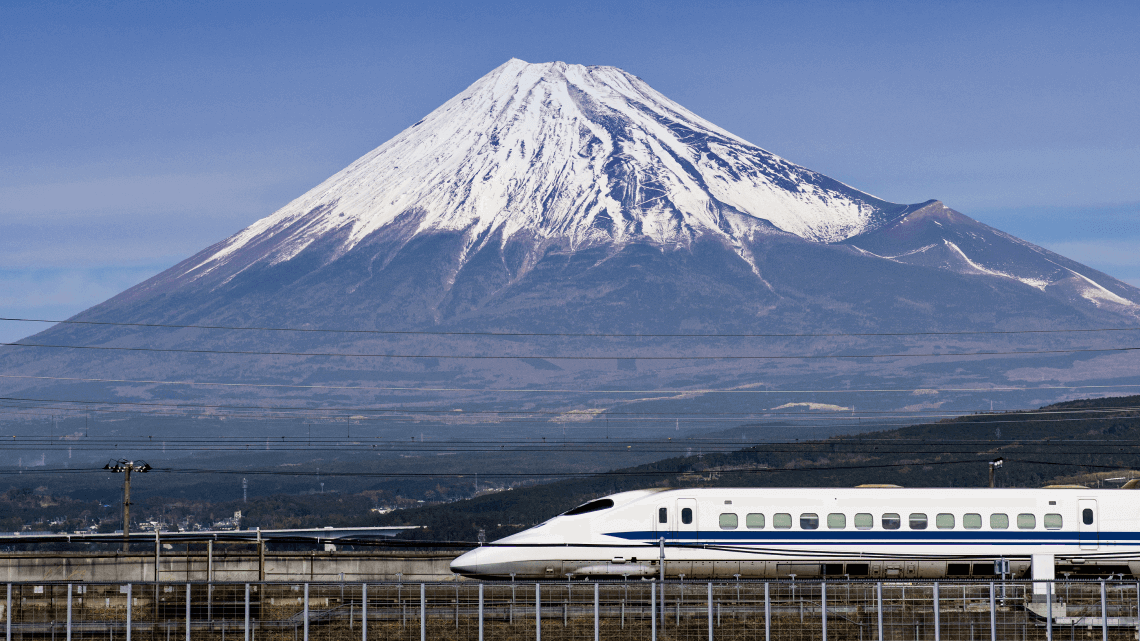
Of course, the easiest way to plan your travels is by asking an expert: whether a friend in Japan, a ticket agent, or a company such as Boutique Japan.
But if you prefer to do all the legwork yourself, there are some really helpful travel apps we recommend.
Useful Train Travel Apps for Japan
Navitime is one of the most popular route planners for visitors to Japan. Search routes in detail, and compare timetables to plan your perfect train trip. Along with the useful website functionality, Navitime also offers an app, which some travelers may prefer.
Like Navitime, Jorudan is a powerful transport app, which offers similar functions. Some people prefer Navitime and others prefer Jorudan. Both are reliable, so try them both and see which one feels more intuitive to you.
Google Maps
While not quite as robust as Navitime or Jorudan when it comes to detailed routes and timetables, Google Maps is still a handy reference tool. It’s also ideal for navigating within a city, as you can compare train times versus estimated travel times via other means (such as taxi or walking).
If you plan to use travel apps, make sure you have reliable Wi-Fi in Japan , too!
Navigating the Subway and Local Trains
The apps mentioned above are great for planning, but what if you’re already at the station — and don’t have Wi-Fi? The best thing to do is probably ask a station attendant, but if you want to map out your own trip, here are some basic tips to keep in mind:
- Determine whether your destination station is a local-only stop, or whether express trains stop there. Train maps will have a color-coded legend, and you can tell which trains (local versus express) stop at which stations.
- Make your way to the departure platform, and consult the signs above to ensure you board the correct type of train. If you’re not sure, ask someone! Most people will be happy to help.
- When the train arrives, make sure it is the train you want. Again, if you’re not sure, don’t hesitate to ask a stranger!
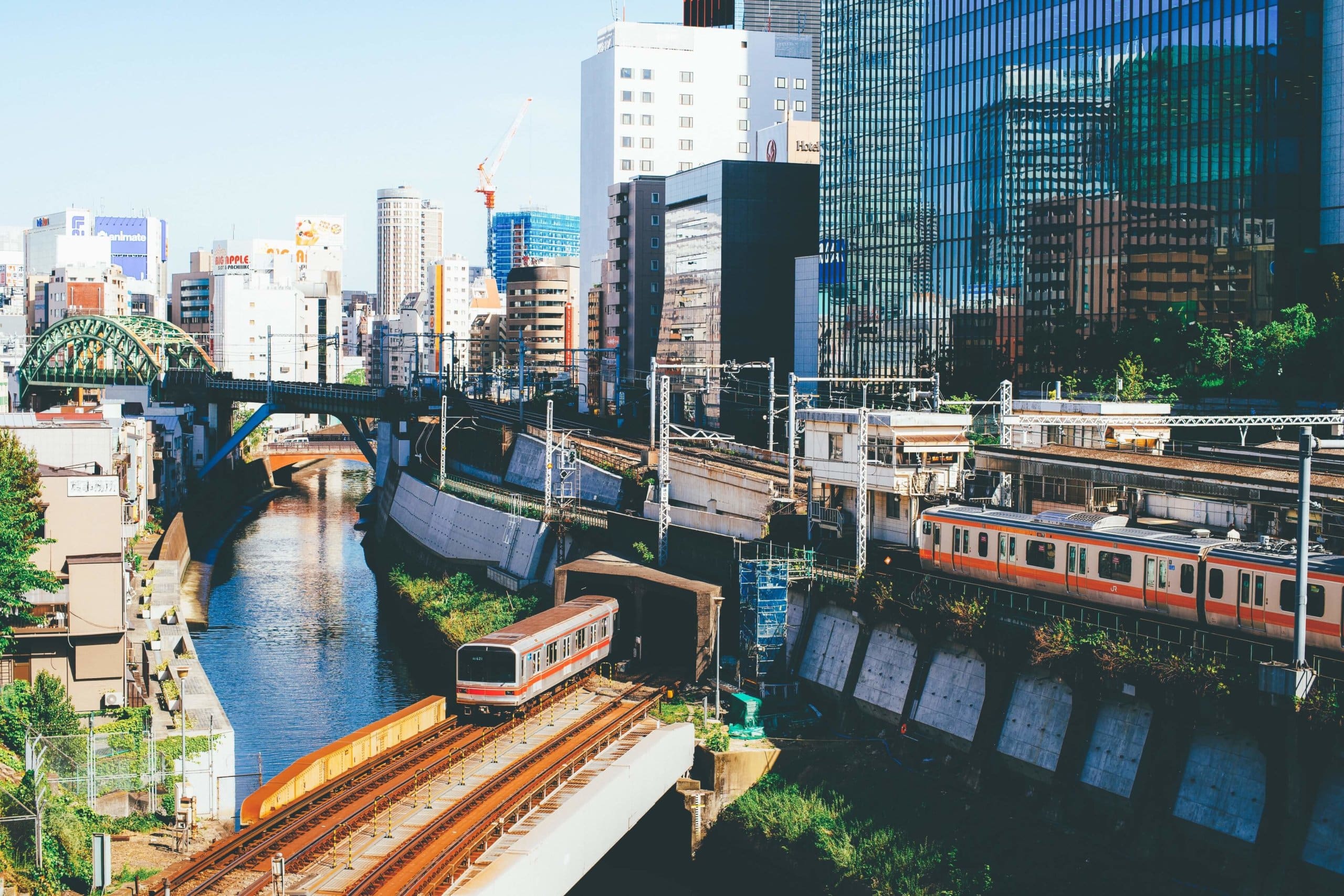
In addition to the famous Japan Rail Pass (mentioned above), many cities and regions in Japan have their own rail and transport passes local to their own area.
They vary by pass, providing unlimited travel over a set period of time in a given region, and might include a round trip to a particular station.
There are too many to list in detail here, but we like the following passes for their ease and convenience in their respective areas.
Tokyo Transport Passes
- Tokyo Metro 24-hour Ticket (600 JPY): Unlimited rides for 24 hours on the Tokyo Metro underground. You’ll recoup the cost with three or four rides on the subway.
- Common One-Day Ticket for Tokyo Metro and Toei Subway (900 JPY): Unlimited rides on both subway lines for 24 hours.
- Tokyo Combination Ticket (1,590 JPY): Unlimited rides on Tokyo Metro, Toei Subway, and JR Lines. Valid only on the same day. If you’re traveling extensively around central Tokyo in a single day, this is a good pass to get.
Kansai (Kyoto and Osaka) Transport Passes
- Kyoto City Bus and Kyoto Bus One-Day Pass : With only two subway lines in Kyoto, there’s much in the city that’s accessible only by bus. Most people who rely on public transportation will ride the city buses. At 230 JPY per ride, you recoup the 600 JPY pass in just three rides.
- Subway, Bus One-Day (Two-Day) Pass : Gives you unlimited bus and subway rides within the central Kyoto area. Available in one- or two-day versions.
- Osaka 1-day or 2-day pass: Gives you unlimited rides on the Osaka Metro and Osaka City Bus for one or two days.
Other Destinations
- Hakone Freepass : Whether you choose the 2-day or 3-day pass, this gives you unlimited rides throughout the Hakone area on almost any mode of transport: trains, cable cars, buses, and even the sightseeing cruise boat. You can choose to include a round-trip ticket from Shinjuku Station to Odawara Station.
- Koyasan World Heritage Pass : Valid for two consecutive calendar days, this rail pass gives you a round trip to Mount Koya from one of Osaka’s Nankai Railway stations (such as Namba Station), along with unlimited bus travel on Mount Koya.
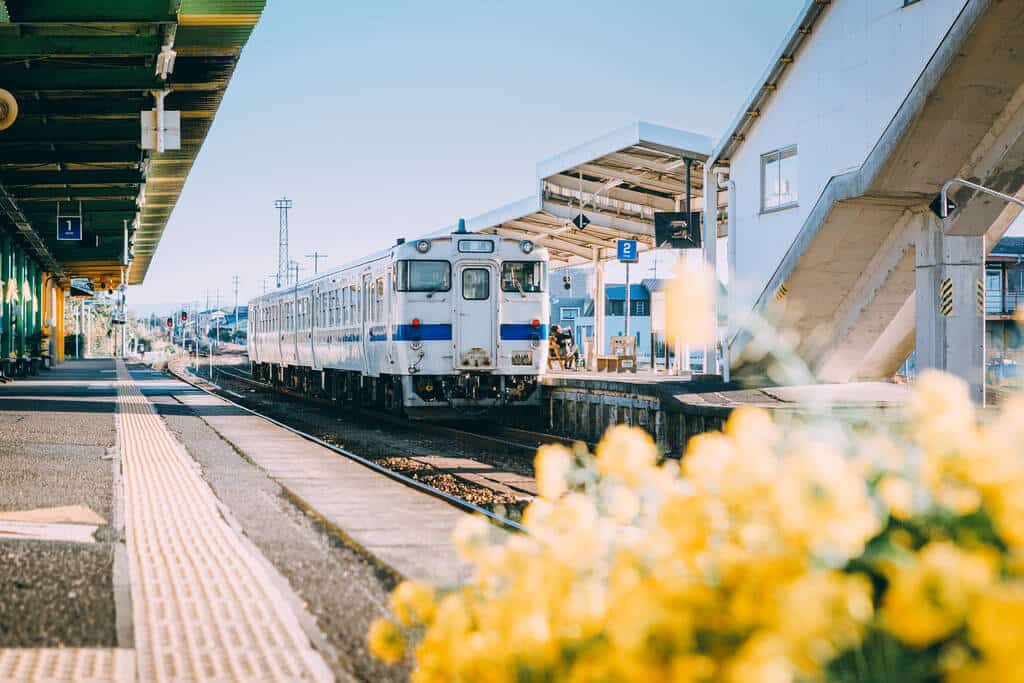
While Japan does have an extensive train network, other forms of public transportation aren’t too shabby either. You’ll find buses in most major cities, and some more remote areas in rural Japan are accessible only by bus.
When in major cities, it is incredibly easy to hail a cab. Find a main road rather than a quiet side street, and chances are that a taxi will come drifting past.
Don’t bet on always being able to use ride-sharing apps such as Uber in Japan — due to a strong taxi industry lobby, these companies haven’t made significant inroads into the country. But given the quality of Japanese taxi services — the cars are clean, and the drivers unfailingly polite — we don’t miss ride-sharing apps in cities here. Much.
You can go to most places in Japan by train. Sometimes, though, the travel time and number of transfers make it more trouble than it’s worth.
A good rule: If your train journey looks like it’s going to be more than four to six hours and isn’t a direct train, and you have the option to take a domestic flight, just do it.
Ferries are a more unorthodox but fun way to travel in Japan. It’s an interesting option to look into if you’re keen on traveling to more remote parts of the country — especially if you like slow travel, and have good sea legs!
Need more reasons to get excited about exploring Japan by train? Don’t miss our article on the best time of year to visit Japan .
More Great Posts

Is Japan Expensive?
One of the most common myths about Japan is that it’s incredibly pricey — but how expensive is Japan really?…

Japan’s Best Boutique and Luxury Hotels & Ryokans
The best hotels and ryokans in Japan range from charming traditional inns in the countryside, to stylish design hotels and…

Traveler’s Guide to the JR Pass (Is It Worth It?)
The Japan Rail Pass (or JR Pass, for short) can be a good way to get around Japan, but many…

Plan Your Japan Trip
Learn more and contact us to discuss your unique trip.
Get Started
- The Process
- Testimonials

Route Search
- First Train
Route Options
- Reserved Seat
- Non-Reserved Seat
- Green Car (first class)
- No Preference
- Use If Possible
- Do Not Use If Possible
- Prefer to Use Nozomi
- Also Show Results for Hikari
- Prefer to Use Local Train
Planning a rail trip around Japan? Use Japan Rail Planner to plan your route, find accommodation, and more!
Or browse our route templates ..
Our app helps you plan and book everything you need for your rail trip around Japan.
Plan and visualise your ideal route around Japan.
Easily view and edit your trip itinerary.
Japan Route Finder & Planner
Find the best route including bullet train, bus, airline, and taxi. Compatible with your railway pass. Plan your trip by calculating the train cost and distance. Check the train schedule. View the route on a map. Know which station to transfer, which exit to go out.
Main feature
- Pass Calculator
- Route Timetable
Often Used Routes
Japan travel tips.
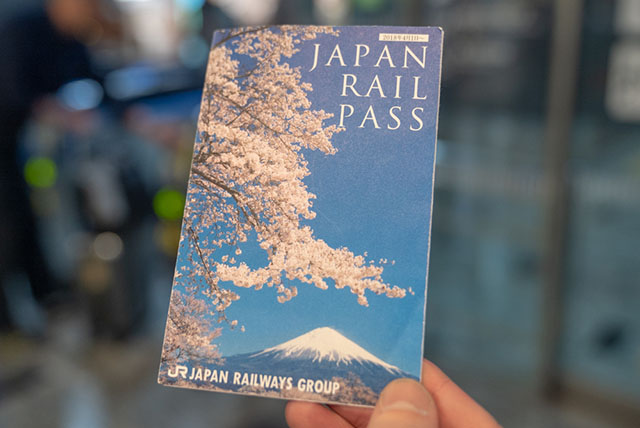
Was the information on this site useful?
Insufficient content
Thank you for your response. We will continue to strive for improvement in quality.
Login or Register
Reset password
Create account.
Please agree to the Privacy Policy and Terms and Conditions of Use before proceeding.
🙌 Awesome, you're subscribed!
Thanks for subscribing! Look out for your first newsletter in your inbox soon!
Get us in your inbox
Sign up to our newsletter for the latest and greatest from your city and beyond
By entering your email address you agree to our Terms of Use and Privacy Policy and consent to receive emails from Time Out about news, events, offers and partner promotions.
Awesome, you're subscribed!
The best things in life are free.
Sign up for our email to enjoy your city without spending a thing (as well as some options when you’re feeling flush).
Déjà vu! We already have this email. Try another?
Love the mag?
Our newsletter hand-delivers the best bits to your inbox. Sign up to unlock our digital magazines and also receive the latest news, events, offers and partner promotions.
- Los Angeles

Two weeks in Japan: the ultimate rail itinerary for first-time visitors
Got two weeks to explore Japan? Lucky you. Here’s how to spend your time in the island nation using the 14-day Japan Rail Pass

It’s cliché to say you could spend forever in Japan and not get bored. What I will say is that two weeks in Japan will never feel like enough, but makes for a great introduction to this endlessly fascinating country. Using the Japan Rail pass, you can take in the lights and buzz of Tokyo before experiencing the country’s rich local culture.
This two-week Japan itinerary takes you on a round-trip from Japan’s delightfully disorienting capital, whisking you from castle towns in the north to the cities of Osaka , Kyoto and Hiroshima in the south – and finishing off with a relaxing break in the hot spring town of Beppu. You’ll travel the length of Japan’s main island of Honshu and experience the onsen island of Kyushu, visiting craftspeople, rolling through rice paddies, marveling at mountain temples, feasting on local specialties like okonomiyaki – and much, much more.

Spoiler: some of the best places in Japan are the ones that you stumble upon in between hitting the major attractions. Do treat this as a guide and feel free to go your own way – that’s the flexibility the Japan Rail Pass can offer (more on that below).
How to travel around Japan
There’s no more natural way to travel in Japan than by train. I’ve traveled extensively from north to south using Japan’s famously efficient, modern rail system, which reaches nearly every corner of the country.
For maximum freedom and flexibility, a rail pass is a great way to go. The best pass for visitors is the Japan Rail Pass or JR pass, an all-inclusive ticket covering almost any Japan Rail train in the country – including most high-speed trains.
The current price for a 14-day adult pass purchased outside of Japan is ¥47,250 (£275, $341); ¥52,960 (£302; $380) if purchased inside Japan. Note that the price will rise in October 2023 to ¥80,000 ( £457; $575) for a 14-day pass. Before the increase, the pass is excellent value; after the hike, the pass is still a good choice if you want to travel all over Japan, visit several different places, and plan to spend no more than a few days in each location.
You should order your passes well in advance of your trip, as shipping can take a while. Note that passes are only open to foreign visitors, and cannot be purchased by residents of Japan or those with Japanese passports.
If you’d rather concentrate on seeing one area, a regional pass is a good bet. Choices include the JR East Pass (Tohoku), the JR Tokyo Wide Pass (Area surrounding Tokyo), the JR West All-Area Pass (Western Honshu), as well as passes covering Kyushu , Shikoku , and Hokkaido .
The following itinerary uses the nationwide Japan Rail Pass.
Selena Takigawa Hoy is a Japanese-American writer based in Tokyo. A t Time Out, all of our travel guides are written by local writers who know their cities inside out. For more about how we curate, see our editorial guidelines and check out our latest travel guides written by local experts.
RECOMMENDED:
🇯🇵 The best things to do in Japan 🏨 The best hotels in Japan
Been there, done that? Think again, my friend.
The ultimate two-week Japan itinerary
Days 1-3: tokyo.

Welcome to Tokyo! It’s time to start your trip with a few days in Japan’s exhilarating capital. Most of central Tokyo is accessible by the metro – this is a separate system from Japan Rail and does not fall under the pass, so we recommend you don’t activate your rail pass yet (more on that later).
Shop your way through bustling Shibuya , stroll through Yoyogi Park , visit Meiji Shrine , look for toys and anime goods in Akihabara , and eat and drink your way through the city, from Michelin-starred restaurants to cheap noodle stands and quirky street food (make sure to snap a photo of the crazy cotton candy from Momi & Toys ).
Where to stay in Tokyo
The Asakusa Kokono Club Hotel is spacious by Tokyo standards, close to the famous Sensō-ji (temple), and loaded with delightful design details. On a tight budget? The Toyoko Inn chain has locations all over the city. Quarters are on the smaller side, but rooms are clean and serviceable, and there’s a basic free breakfast.
Next stop… Hirosaki
It’s time to activate your rail pass! Take it to the ticket office of a major Japan Rail station to activate, then book a seat on your northbound train. You can travel from either Tokyo Station or Ueno Station. Reservations (free) are required on the Tohoku Shinkansen, so be sure to secure a booking as soon as you validate your pass.
Ride the Tohoku Shinkansen to Shin-Aomori Station, then switch to the limited express Ou Line to Hirosaki Station. The journey takes four hours.
Days 3-4: Hirosaki

Hirosaki is a castle town in Aomori Prefecture, the northernmost prefecture in Honshu. Once there, stroll the grounds of Hirosaki Castle and the adjacent park, and visit the Neputa Village to learn about the fascinating culture of neputa : huge paper lanterns covered with depictions of gods and warriors that grace the summer Neputa Festival floats. Don’t leave without sampling the city’s famous apple pastries and hard cider.
Where to stay in Hirosaki
The Good Old Hotel , in the heart of the drinking and nightlife district, is a row of tiny former ‘snack’ bars converted into accommodation. The Dormy Inn is an efficient chain known for its on-site hot spring baths and free late-night instant ramen.
Next stop… Akita and Sendai
Train enthusiasts will want to reserve a seat on the scenic Resort Shirakami , running between Hirosaki and Akita. The one-way trip takes under five hours, spent gazing out at the ocean and enjoying some of the onboard interludes, such as a Tsugaru-jamisen performance and a puppet show. Change in Akita , where you can spend a few hours visiting Akita Museum of Art and Senshu Park , adjacent to the station, before boarding a southbound shinkansen (don’t forget your reservation) to Sendai , the capital city of Miyagi Prefecture. The Akita-Sendai train takes two hours 20 minutes.
Days 4-5: Sendai

Delve into Sendai’s samurai history, learning about the exploits of Masamune Date and the Date Clan, whose mausoleum and statues dot the city. Spirits fans will enjoy visits to the Nikka Whisky Distillery or touring some of the many local sake breweries. In the hot spring enclave of Sakunami Onsen , you’ll find traditional artisans making carved wooden kokeshi dolls and other crafts.
Where to stay in Sendai
A fun choice in Sendai is the Hen-na Hotel (literally ‘Strange Hotel’) featuring a high-tech, hologram-driven check-in.
Next stop... Kanazawa
You’ll need two shinkansen to get to Kanazawa on the west coast of Honshu: the Tohoku or Akita Shinkansen from Sendai to Omiya (just over an hour) and the Hokuriku Shinkansen from Omiya to Kanazawa (about two hours).
Days 5-7: Kanazawa

The capital of Ishikawa Prefecture, Kanazawa has loads of traditional charm and well-preserved areas with a fraction of the tourists of Kyoto or Tokyo. There’s a lot to pack in here. Stroll around Kanazawa Castle and the colourful Edo-era gardens of Kenroku-en , admire the handsome wooden buildings in the teahouse districts of Higashi Chaya and Nishi Chaya , browse the stalls at Omicho Market , learn about the art of gold leaf and its history in the region, and check out the 21st Century Museum of Contemporary Art .
Where to stay in Kanazawa
A new(ish) opening in May 2023, Omo5 Kanazawa Katamachi is a boutique mid-range option not far from the 21st Century Museum of Contemporary Art.
Next stop... Kyoto
You have a few options to get between Kanazawa and Kyoto; the most direct is the Thunderbird Express, taking about two hours 15 minutes.
Days 7-10: Kyoto, Osaka and Nara

There’s so much to see in Kyoto – and everyone else wants to see it too. If possible, visit during the week for slightly fewer crowds. Highlights include Kinkaku-ji (the Golden Pavilion), the pagoda and shopping street at Kiyomizu-dera , and the Zen garden at Ryōan-ji . Use Kyoto as a base to visit nearby cities as well: head over to Osaka (30 minutes by shinkansen) to explore foodie neighborhoods like Dotonbori , Shinsekai , and Kuromon Market . You might also want to visit the ancient capital of Nara to see the enormous Buddhist temple Todaiji and its accompanying tame deer.
Where to stay in Kyoto
For a nice midrange hotel right near Kyoto Station, try the Rihga Royal Hotel Kyoto , which has an indoor swimming pool and several dining options onsite. For something more classic, there’s Kyomachiya Ryokan Sakura Urushitei , with futon bedding, tatami mats, and traditional furnishings. Do opt in for the excellent Japanese breakfast.
Next stop... Hiroshima
Time to board the Tokaido Shinkansen from Kyoto to Hiroshima; 1 hour 40 minutes. Reservations are recommended, but not required.
Days 10-12: Hiroshima

The focus of any Hiroshima visit is of course Peace Park , the A-Bomb Dome , and Hiroshima Peace Memorial Museum . Hiroshima is also a beautiful, resilient, and thriving city.
Spend at least half a day visiting the island of Miyajima ; with a moderate hike, you’ll catch sight of roaming deer and monkeys, as well as Itsukushima Shrine , a Unesco World Heritage Site famous for its ‘floating’ torii (the red shrine gate that rises from the sea off the coast).
Don’t forget to get your fill of okonomiyaki , Hiroshima’s most famous food, a thick savory pancake made with batter, noodles, vegetables, meat or seafood, and more. Vegan versions are available at several locations including Okonomimura .
Where to stay in Hiroshima
The Knot Hiroshima is a stylish, affordable option near Peace Park; or if you don’t mind tight spaces, why not try a budget capsule hotel? The Sejour Inn Capsule offers pods for all genders (some capsule hotels only accept men), with compact sleeping quarters, lockers, and shared bathing facilities.
Next stop... Beppu
Take the Tokaido Shinkansen to Kokura Station, then change to the Sonic Nichiren Express to Beppu Station; 2 hours 30 minutes.
Days 12-14: Beppu

The island of Kyushu generally has a more laid-back vibe than much of Honshu (Japan’s main island), and in the hot spring resort town of Beppu , relaxation is the name of the game. Check out the sulfuric pools and geysers called the ‘Hells’ of Beppu and soar over the active volcano of Mt. Tsurumi on the Beppu Ropeway – then unwind in the region’s famous hot spring baths. Each has different mineral properties that are believed to soothe various ailments.
Where to stay in Beppu
When in a hot spring town, staying at a ryokan is a must. Try Beppu Nagomitsuki or Ryokan Sennari , both of which offer sumptuous multi-course meals and on-site open-air hot spring baths.
Next stop... back to Tokyo
Use the last day on your pass to return to Tokyo . Take the Sonic Nichiren Express back to Kokuro, then the Tokaido Shinkansen all the way back to Tokyo; about 6 hours. Don’t forget to pick up a bento at the station or buy one on the train.
[image] [title]
Discover Time Out original video
- Press office
- Investor relations
- Work for Time Out
- Editorial guidelines
- Privacy notice
- Do not sell my information
- Cookie policy
- Accessibility statement
- Terms of use
- Modern slavery statement
- Manage cookies
- Advertising
- Time Out Market
Japanese Trains
Japanese trains information.
Types of trains
Railway Length
Crossing Japan Journey
The longest railway line

Japanese Trains Map
Q&a: japanese trains.
WHAT IS THE TRAIN IN JAPAN CALLED?
HOW FAST ARE JAPANESE TRAINS?
HOW MUCH ARE TRAIN TICKETS IN JAPAN?
HOW TO BUY A TRAIN TICKET IN JAPAN?
For short-distance trips, travelers can purchase tickets at the ticket machine, while for long-distance trips, they must purchase tickets and seat reservations at manned ticket counters or selected ticket machines. Thus, you can purchase the ticket online on Rail.Ninja. In case you want to learn more about this booking platform, check Rail Ninja review . You can also check Rail Ninja Reviews to find more information.
Most Traveled Japanese Train Lines
Osaka to tokyo train, kyoto to tokyo train, hiroshima to tokyo train, tokyo to osaka train, tokyo to kyoto train, tokyo to hiroshima train.
- Meetings & Events
- Select Language 简体中文 繁體中文(香港) 繁體中文(臺灣) India (English) Bahasa Indonesia 한국어 ภาษาไทย Tiếng Việt Singapore (English) Philippines (English) Malaysia (English) Australia/New Zealand (English) Français Deutsch Italiano Español United Kingdom (English) Nordic countries(English) Canada (English) Canada (Français) United States (English) Mexico (español) Português العربية Japan(日本語) Global (English)
- India (English)
- Bahasa Indonesia
- Singapore (English)
- Philippines (English)
- Malaysia (English)
- Australia/New Zealand (English)
- United Kingdom (English)
- Nordic countries(English)
- Canada (English)
- Canada (Français)
- United States (English)
- Mexico (español)
- Global (English)
- Fujiyoshida
- Shimonoseki
- Ishigaki Island
- Miyako Island
- Kerama Island
- Tokyo Island
- Koka & Shigaraki
- Hida Takayama
- Ginza, Nihonbashi
- Beppu & Yufuin (Onsen)
- Ginzan Onsen
- Nagasaki Islands

- Kumano Kodo
- Shikoku Karst
- Amami Oshima
- Hachimantai
- Omihachiman
- Aizuwakamatsu

- Diving in Japan
- Skiing in Japan
- Seasonal Flowers in Japan
- Sustainable Outdoors
- Off the Beaten Track in Japan
- Scenic Spots
- World Heritage
- Home Stays & Farm Stays

- Japanese Gardens
- Japanese Crafts
- Temple Stays
- Heritage Stays
- Festivals and Events
- Theater in Japan
- Japanese Tea Ceremony
- Cultural Experiences in Japan
- Culture in Japan

- Local Cuisine Eastern Japan
- Local Cuisine Western Japan
- Local Street Food
- Japan's Local Ekiben
- Japanese Whisky
- Vegetarian and Vegan Guide
- Sushi in Japan Guide
- Japanese Sake Breweries

- Art Museums
- Architecture
- Performing Arts
- Art Festivals
- Japanese Anime and Comics
- Japanese Ceramics
- Local Crafts

- Scenic Night Views
- Natural Wonders
- Theme Parks
- Samurai & Ninja
- Iconic Architecture

- Wellness Travel in Japan
- Japanese Ryokan Guide
- A Guide to Stargazing in Japan
- Relaxation in Japan
- Forest Bathing (Shinrin-yoku)

- Experiences in Japan
- Enjoy my Japan
- National Parks
- Japan's Local Treasures
- Japan Heritage
- Snow Like No Other

- Visa Information
- Getting to Japan
- Airport Access
- COVID-19: Practical Information for Traveling to Japan
- Anime Tourism
- Countryside Stays
- Accessible Tourism
- Hokkaido Great Outdoors
- Scenic World Heritage in Tohoku
- Shikoku’s Nature and Traditions
- Southern Kyushu by Rail

- Traveling by Rail
- How to Travel by Train and Bus
- JR Rail Passes
- Scenic Railways
- Renting a Car
- Sustainable Travel in Japan
- Travel Brochures
- Useful Apps
- Online Reservation Sites
- Eco-friendly Accommodation
- Luxury Accommodations
- Traveling With a Disability
- Hands-free Travel
- How to Book a Certified Tour Guide
- Volunteer Guides

- Japanese Manners
- Spring in Japan
- Summer in Japan
- Autumn in Japan
- Winter in Japan
- Cherry Blossom Forecast
- Autumn Leaves Forecast

- Japan Visitor Hotline
- Travel Insurance in Japan
- Japan Safe Travel Information
- Accessibility in Japan
- Vegetarian Guide
- Muslim Travelers
- Safety Tips

- Visa Info for Canadians
- Tour Operators in Canada
- Brochure Request
- Know Before You Go
- JR Pass Retailers
- Regional Rail Passes
- Rail Travel FAQ

- Inspiration
- Travellers' Blog
- Japan Through the Eyes of Canadian Journalists
- Signature Journeys by Canadian Celebrities

- MICE Newsletter
- Notice of Campaigns
- What's New

My Favorites
${v.desc | trunc(25)}
Planning a Trip to Japan?
Share your travel photos with us by hashtagging your images with #visitjapanjp

Everything You Need to Know About Rail Travel in Japan
For a country renowned for its efficient, punctual, and far-reaching train service, trying to wrap one’s head around Japan’s transit is not necessarily intuitive for first-timers! With poetic names denoting different train speeds, dozens of different types of passes, and complex lattices of overlapping rail networks, trying to make sense of it all can be overwhelming to say the least. Below we’ve tackled some of the common questions, to help you feel the peace of mind that comes with being a veteran rail traveller in Japan.
How far in advance do I need to book my bullet train tickets?
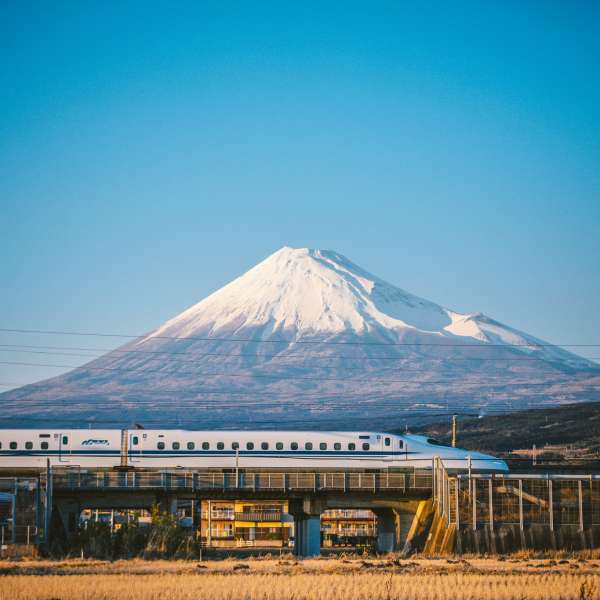
One aspect that tends to shock many North Americans is that the Tokaido Shinkansen (the bullet train route servicing Tokyo-Kyoto-Osaka, among other major cities) departs roughly every five minutes during peak hours! Even on less-trafficked Shinkansen corridors and during off hours, these express trains tend to depart quite often.
Given this remarkable frequency, it generally is not necessary to book your tickets in too far advance – in fact, many travellers prefer the freedom that comes with not being locked into a certain departure time. With that said, the two exceptions to be mindful of are peak holiday seasons (such as the Golden Week string of civic holidays between late April and early May) and when travelling in larger groups that are hoping to sit together.
Okay, but if I really want to, HOW do I book?
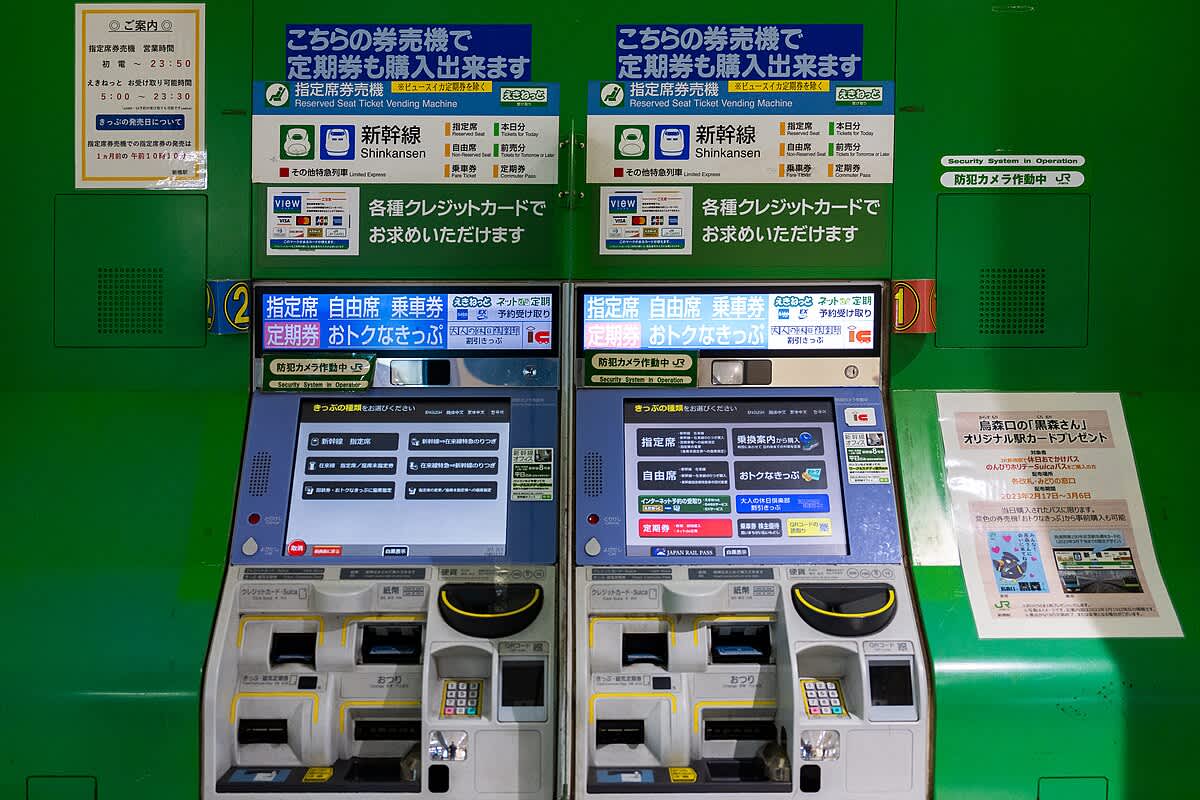
While there are a myriad of options for Shinkansen booking, many will find the easiest way to do this is upon arrival in Japan. Virtually all JR stations will have automated shinkansen & express ticket vending machines – offering multilingual, consolidated booking throughout the entire country – instructions for which are meticulously detailed on their official webpages. Larger hub stations will also have “Midori no Madoguchi” ticket offices, where a live attendant can help you make your travel arrangements.
However, if you are hoping to have your tickets squared ASAP, there are a couple options available to you. Although booking directly through JR is possible, there are a few caveats:
1) Unlike ticket machines in Japan, online booking is splintered into JR East , JR West , JR Kyushu , and JR Central * (*responsible for multi-corridor booking such as the Tokaido-Sanyo Shinkansen, and the nationwide Japan Rail Pass, etc…). Which you use will depend on where you are going! While JR Hokkaido and JR Shikoku are technically seperate companies/corridors, booking for them can occur under JR East and JR West's websites respectively.
2) Booking is only available from 1 month prior to the boarding date.
3) These websites have some service outages (as of May 2024, availability for JR East, West, and Kyushu’s booking portals is 5:30AM-11PM JST)
If that sounds like too much hassle, then there may be some other options. Tokaido, Sanyo, Kyushu shinkansens (ie: any of the bullet trains running from Tokyo southbound) can be booked through SmartEX – a consolidated booking website/app, managed by JR Central. Unlike other booking portals, SmartEX offers reservations from one year prior to the departure date. That failing, you may consider booking via a third-party travel service provider. While these typically incur an additional service fee, there are any number of travel agents (both online, and brick and mortar) that can assist in sales of JR passes and tickets. For a list of Japan-bound tour operators in Canada, click here .
Reserved vs Non-reserved Seating
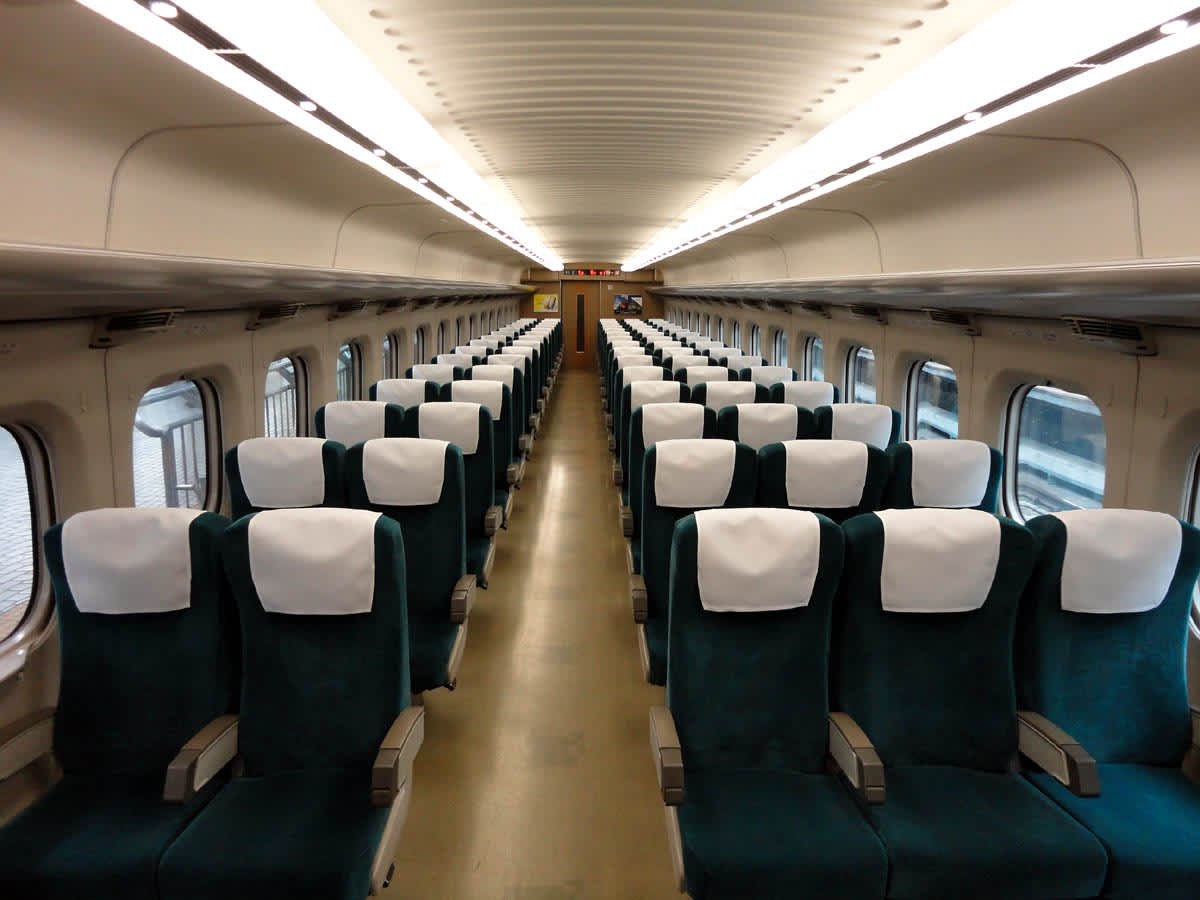
Most express trains in Japan will include both reserved, and non-reserved cars. Non-reserved cars are marginally cheaper, making them a popular option among solo travellers and those who are light on luggage. While generally there is ample seating, during the busiest seasons, you may find that non-reserved seats fill up fast. In this case, you may find yourself standing until a seat opens up – or in the worst-case scenario, waiting it out on the platform until the next train. To guarantee yourself a seat, consider opting for reserved seating when booking via any of the methods mentioned in the point above.
Base Fare Tickets vs. Limited Express Tickets
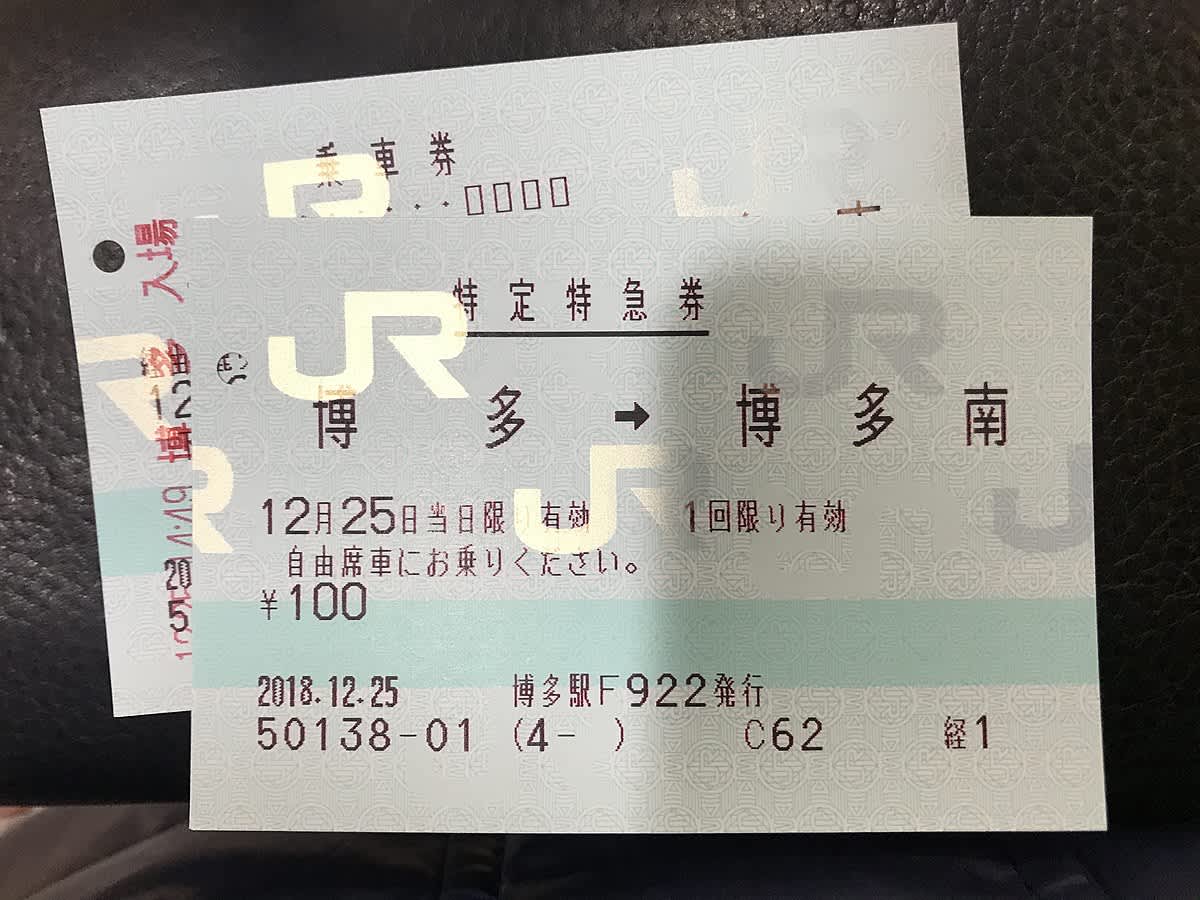
In addition to the reserved vs. non-reserved option, another aspect that can confuse those unfamiliar with train travel in Japan is the difference between base fare tickets (jousha-ken/乗車券) and limited express tickets (tokkyuu-ken/特急券). The base fare ticket covers the distance it takes from point A to point B (ie: what it would cost if you were to embark on a potentially lengthy journey using only local trains), whereas an express ticket allows you to ride a given express train servicing that distance. Typically, the base fare ticket vs ltd. express fare ticket tends to constitute roughly a 50-50 split. Travellers beware: if it feels like you got a deal that was too good to be true, then it’s possible you may have only purchased one of these two tickets!
Rail Passes – what do they cover? Do I need one?
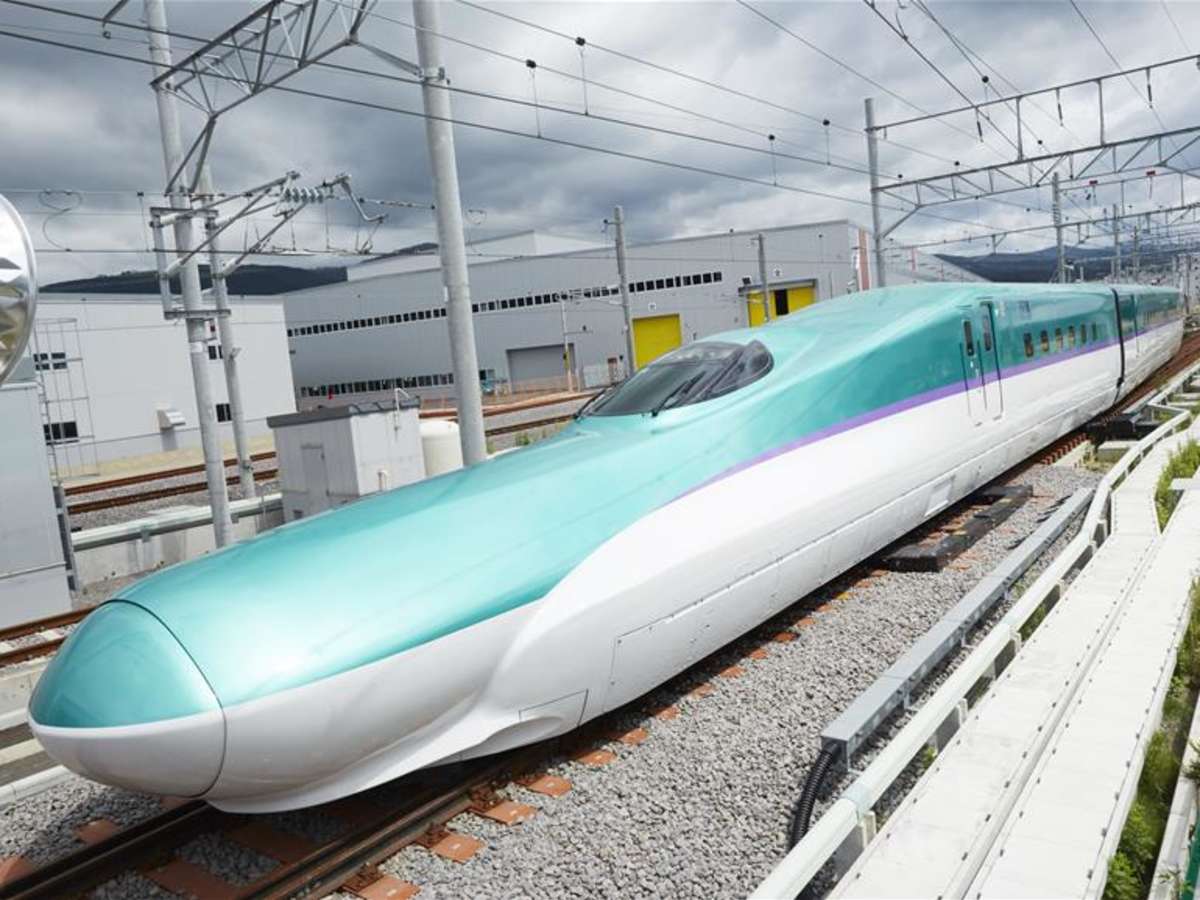
Though certainly not mandatory, a Japan Rail Pass can be a great way to reduce costs and hassle! JR Passes are available in 7, 14, 21 day spans, during which period, they will allow unlimited use of basically all of Japan’s national railways (JR) – whether it’s the shinkansen (bullet train), or local lines. Though smaller private railways and local metros are not covered by the JR pass, many metropoles will also have their own local JR lines – meaning that for most itineraries, there is a good chance that the nationwide JR Pass will cover the vast majority your trip. The only JR services not included on the nationwide JR Pass are certain luxury “cruise” trains, as well as the Nozomi and Mizuho speed tiers of the Shinkansen.
What are Nozomi and Mizuho?!
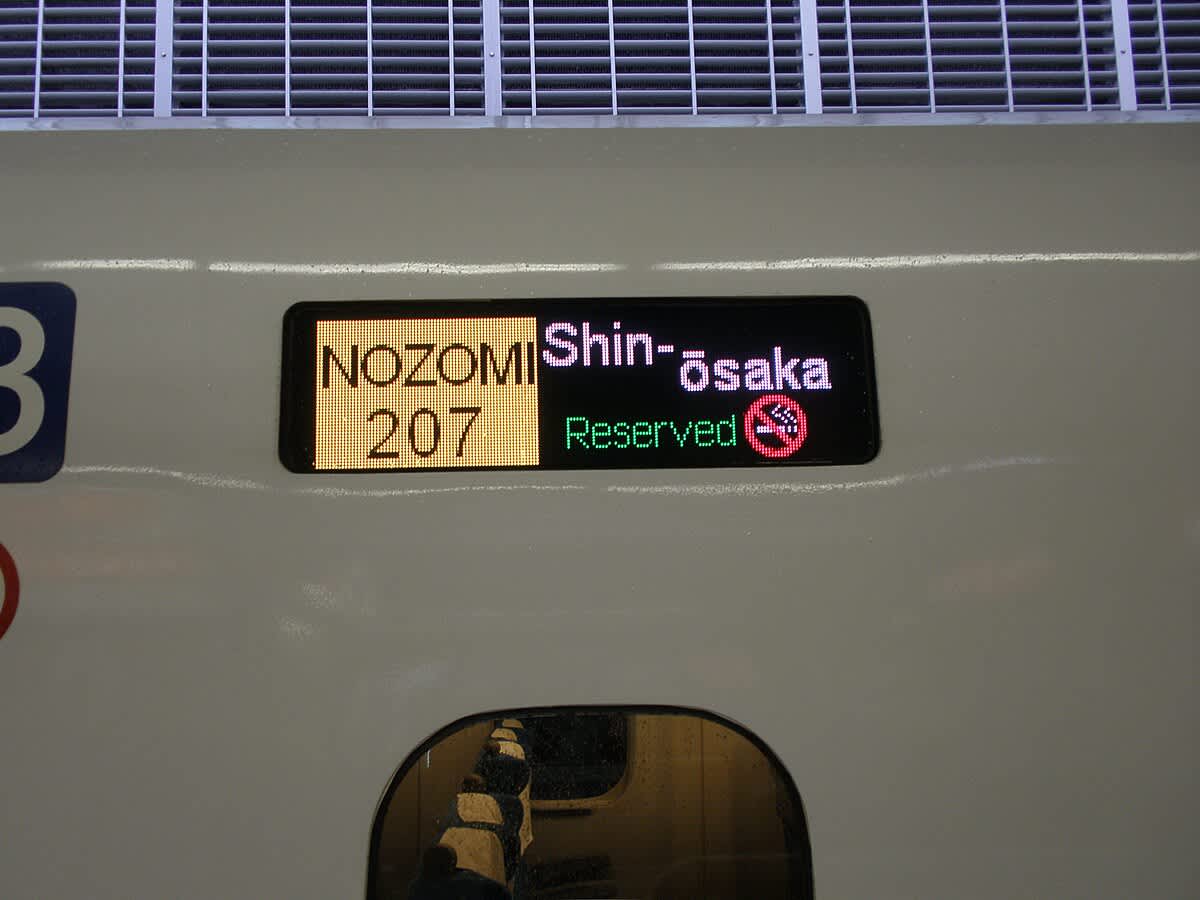
Nozomi and Mizuho refers to highest express tiers of shinkansen, which skip over the smaller stations, servicing strictly the hub cities. Fret not – even if your JR pass does not allow you to ride these service tiers, you will still get basically the same Shinkansen experience, as other service tiers have the same cars, and run along the same sets of track, and reach the same high speeds – just with more frequent stops. With this said, while the time difference between tiers is relatively marginal, if you are determined to ride the Nozomi and Mizuho, this can be done with the purchase of an additional ticket. More information on that is available on JR’s Webpage .
Regional Rail Passes and Discount Tickets
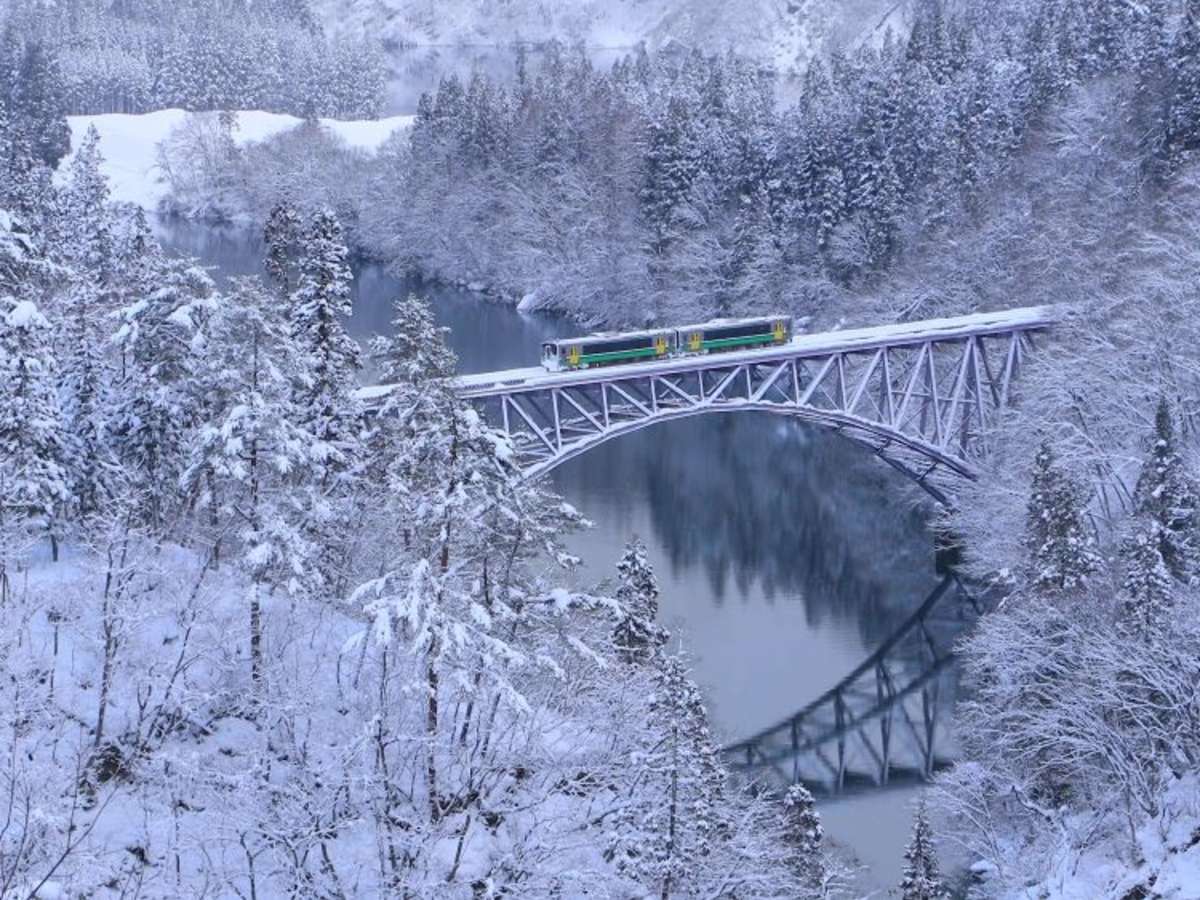
In addition to the nationwide Japan Rail Pass mentioned above, there are also a wide variety of regional passes for JR’s various corridors, as well as other private railways, and all sorts of local metros – some of these are exclusive deals that are only available for international tourists! Check out our regional pass index to find the perfect fit for your trip.
IC Cards (aka: Suica, aka: Pasmo, aka: several other things)
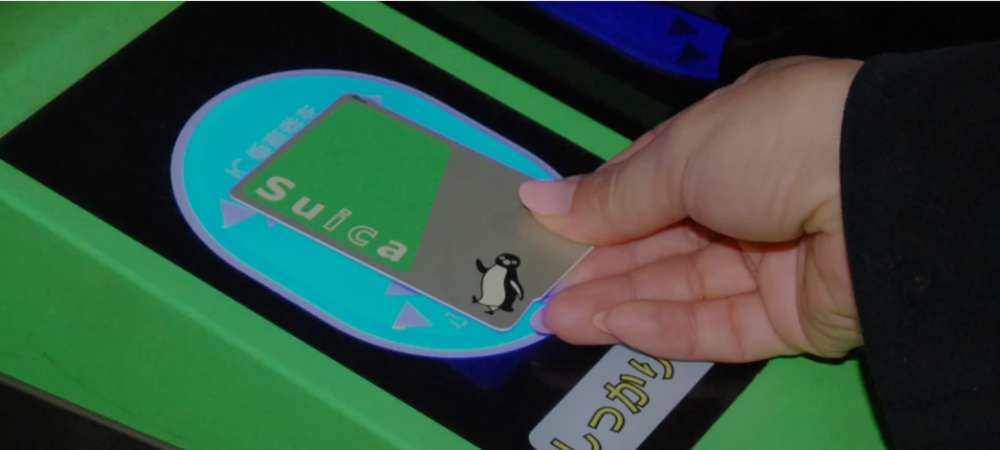
IC Cards are universal, charge-and-tap transit passes that can be used on the vast majority of public transit across Japan, AND as a means of payment at many retail spaces! They have many different names and overseeing companies based on what region they are purchased in, but all IC Cards are essentially the same in terms of functionality. They can be purchased at most train stations, and topped up at automated ticket kiosks and convenience stores throughout the country. These are generally recommended for those seeking a seamless travel experience, without having to worry about rifling for change and purchasing a ticket each time.
HOWEVER… As of March 2024, the two types of IC Card sold in Tokyo (Suica and PASMO) have suspended sales of physical cards due to a global shortage of semiconductors. With that in mind, there are a couple of alternatives available. If you are an iPhone user, you can still download the Suica app to use a digital version of the pass. Alternatively, there are tourist-oriented versions of the cards available at airports, in limited quantities. Further details are available on our IC Card page .
Worst-case scenario, if you do forgo the IC card, it will simply mean purchasing a ticket each time you use public transit. The good news is that all of the ticket machines will typically have English menus available, and staff are generally happy to help those who require assistance.
Don’t Forget to Retrieve Your Ticket/Always Tap On AND Off
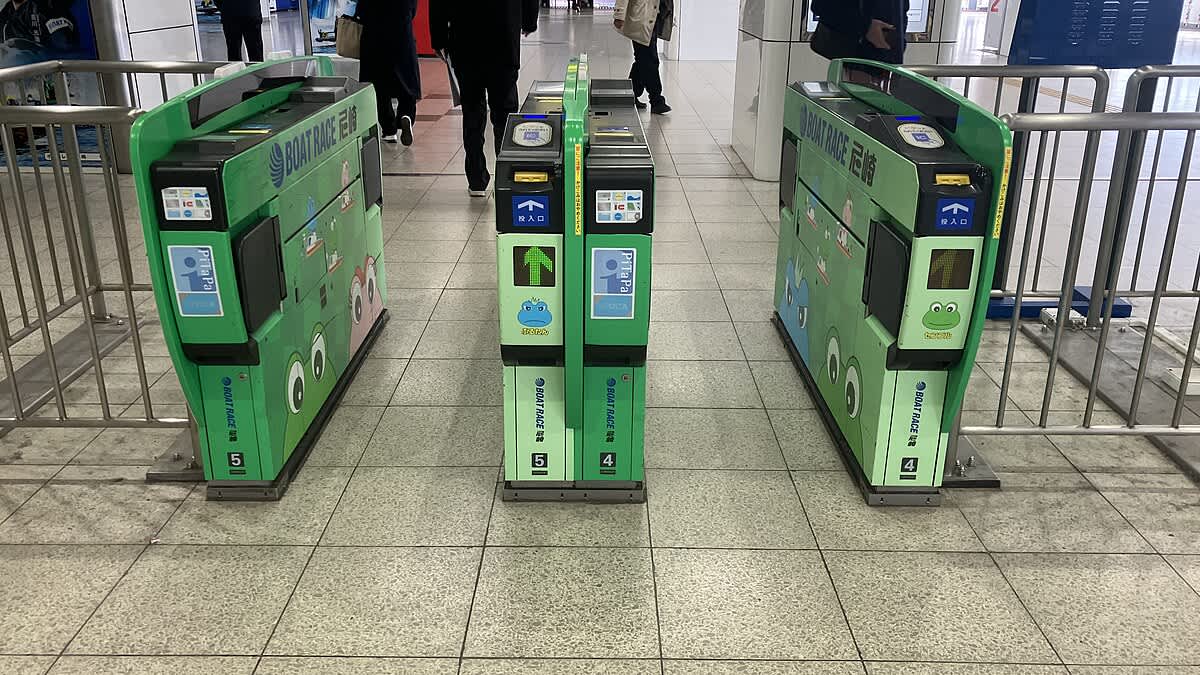
The vast majority of transit fares in Japan are distance-based – meaning you will have to tap, and/or insert your ticket at turnstiles upon entry AND exit. When using tickets, you can insert multiple tickets at the same time, and the machine will return those that are necessary for the remainder of your journey. When riding buses and smaller trains such as trams, typically you will enter via the back door and either tap on, or take a numbered stub as you board. There will be a display board at the front of the vehicle where you will see the corresponding cost for your number. Typically, these vehicles will have change machines available at the front that break 1000 yen bills into smaller currency.
You might like...
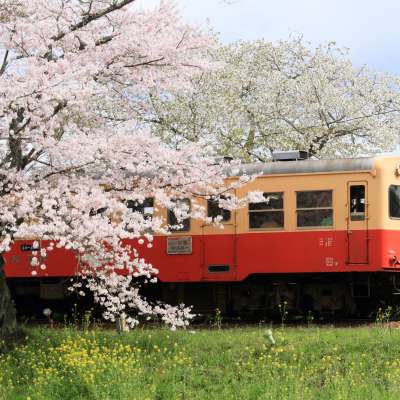
Please Choose Your Language
Browse the JNTO site in one of multiple languages
- Tours & Experiences
- Tailor-made Trips
- Bahasa Indonesia
We are happy to see you again!
Continue with
Or use email.
No Account? Create one
Create account
Already have an account? Sign in
Quickly Sign up with
I agree to Japan Travel's Terms of Service and Privacy Policy . Terms of--> and acknowledge that Japan Travel's Privacy--> applies to me.-->
Email reset password link
Please check your inbox and click the link we will send to you.
- Transportation
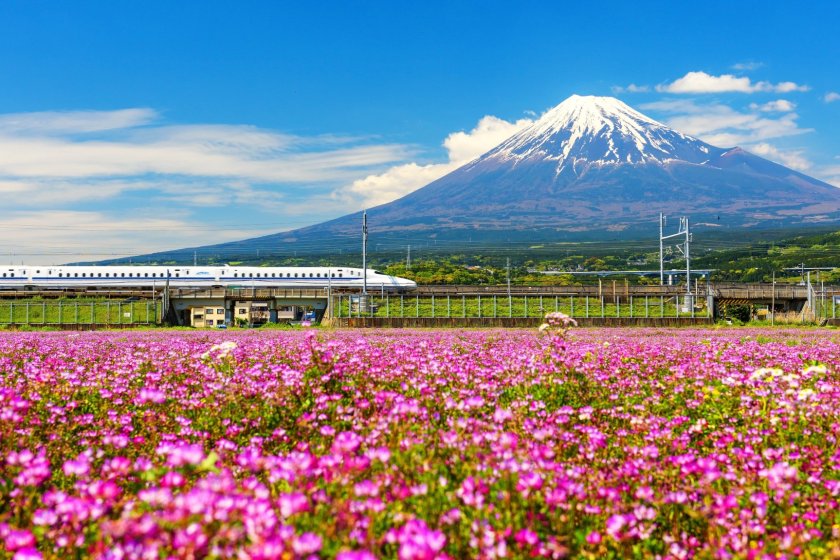
JR Pass: Guide to Japan's Best Rail Pass
An in-depth look into Japan’s discounted travel ticket

If you are visiting Japan, chances are that you will need to ride more than just a train or two. Fortunately, with the Japan Rail Pass (JR Pass), you can easily access a number of the country’s trains, buses, and ferries in a convenient and affordable manner.
Thanks to its flat-rate cost and widespread transportation coverage, the JR Pass is the most cost-effective option for long-distance travel within Japan, especially if you plan to cover as much of the country as possible.
Quick Facts:
- The JR Pass provides coverage on JR trains, buses, and ferries across Japan (restrictions apply)
- 7, 14, and 21-day JR Passes are available
- Only overseas visitors with temporary visitor visas are eligible to purchase the pass
- It is cheapest to purchase the pass outside of Japan through an online third-party vendor or at an overseas JR-designated sales office. You can also purchase the ticket online at JR’s official website or at a ticket office in Japan for a higher price.
The JR Pass is a multi-use, discounted rail ticket that gives passholders access to numerous JR trains, bus services, ferry services, and more. This pass is exclusively available to overseas visitors and can be purchased both online—via authorised retailers or JR’s own official website—as well as in person in Japan. Buying directly through JR’s website or at selected major stations/airports in Japan is about 10–13% more expensive than other channels, but can allow you to book seats immediately and only requires your passport for collection.
The JR Pass cannot be used for the Nozomi and Mizuho services-type Shinkansen bullet trains on the Tokaido and Sanyo Shinkansen lines, which are slightly faster than their Hikari and Sakura-type counterparts.
The pass comes in 7, 14, and 21-day versions, both for adults and children, as well as two class types: Standard Car and Green Car.
With Green Car seating, you can expect more space, a quieter atmosphere and less crowding—for a higher price. If you plan on traveling a lot, the extra comfort and peace may be worthwhile to you.
Please see the JR Pass's pricing below:
*Children between ages 6 to 11 years old are eligible for the children’s discount. Children under 6 ride free, but without seat reservation.
Who is eligible?
In order to be eligible for the JR Pass, you must have a temporary visitor visa upon entering Japan. If you hold any other visa status, you will not be able to obtain the pass but a variety of other passes are available to foreign residents.
The JR Pass is valid for the length of time that you purchase the pass: 7, 14, or 21 days. Staff will stamp your pass upon your first use, and the expiration date will be clearly marked inside the pass.
Do I need it?
In order to get the most value for your money, the JR Pass is best if you’re planning extensive travel within Japan. Those who plan to stay within one area during their stay do not usually choose to purchase the JR Pass as they are not likely to make their money’s worth. Therefore, before buying the JR Pass, plan ahead and make sure that it aligns with your trip.
In addition to reserving Shinkansen seats and unlimited travel on JR rails, buses, and ferries, you can also receive discounts when staying at JR Group hotels.
What's covered?
The JR Pass can be used for the following train rails, buses, and ferries.
All JR-operated lines, including local (普通 futsu ), rapid (快速 kaisoku ), limited express (特急 tokkyu ), and Shinkansen (except Nozomi and Mizuho on the Tokaido and Sanyo Shinkansen) are valid under the JR Pass.
The JR Pass can also be used on the following non-JR lines:
- Tokyo Monorail between Hamamatsuchō and Haneda Airport
- Yamanote Line (Tokyo Metro)
- Anywhere between Hachinohe and Aomori
- Anywhere between Aomori and Noheji
- Anywhere between Hachinohe and Noheji
- Note: travel is only covered if pass holders get off at Aomori, Noheji or Hachinohe
- Note: travel is only covered if pass holders board at Toyama and disembark at Takaoka, and vice versa
- Narita Express between Narita Airport and Tokyo
- Note: travel is only covered if pass holders board at Kanazawa and disembark at Tsubata, and vice versa
While not valid on JR Bus-operated express routes, the JR Pass can be used on local routes for the following bus lines:
- JR Hokkaido Bus
- JR Tohoku Bus
- JR Kanto Bus
- JR Tokai Bus
- West Japan JR Bus
- JR Chugoku Bus
- JR Shikoku Bus
- JR Kyushu Bus
The pass is valid for the JR West Ferry service between Miyajima and Hiroshima.
Purchase the JR Pass easily online (Photo: Ivan Kruk / Shutterstock.com)
Outside of japan.
There are a few ways you can purchase a JR Pass before arriving in Japan:
- Purchase the pass directly from the official Japan Rail Pass site . Once you arrive in Japan, you can pick up your JR Pass at a JR-designated ticket office. You will need to present your passport in order to obtain the pass.
- Purchase the JR Pass through an authorized third-party vendor. Upon successfully purchasing a pass, the vendor will send you an exchange order. To swap your exchange order for the JR Pass, visit a designated JR ticket office upon your arrival in Japan. You must show the physical copy of your exchange order and your passport to receive your pass. Electronic copies or photocopies of any of the two documents will not be accepted. Please also note that the exchange order must be exchanged for a JR Pass within 90 days of its issuance.
- You can also visit an international JR-designated sales office to purchase your pass, and will receive it on the same day.
Things to know
Soon you will be traveling like a local (photo: benoist / shutterstock.com).
The JR Group offers 7, 14, and 21-day JR Passes , and their validity periods always start and end at midnight. For example, if a visitor activates a 7-day pass for immediate use on July 1 at 12pm, then the pass will expire at midnight on July 7, as opposed to July 8 at 12pm.
Once you have your JR Pass, you can enter stations either via manned gates or automatic ticket gates that accept physical tickets. If you use an automatic ticket gate, be sure to retrieve your JR Pass from the machine after walking through the gantry.
During your journey, transport staff may ask you to present your passport with your JR Pass.
Reserve a Shinkansen seat
There are two methods to easily reserve Shinkansen seats:
- Visit a JR Ticket Office at any train station, a Travel Service Center, or a Travel Agency ticket sales office. Tell staff members your desired start point, destination, and departure time, and they will reserve a seat for you.
- You can also reserve seats at automated ticketing machines in any JR train station. First, select your preferred language at the top of the touch screen. Next, proceed to the QR code reading screen, scan the QR code found on your JR Pass, and input your passport number on the next screen. Input your start and end points and preferred departure time. Lastly, collect your reserved tickets.
Oversized luggage
Visitors traveling on the Tokaido, Sanyo and Kyushu Shinkansen lines with oversized luggage must make advanced seat reservations. Japan Rail defines oversized luggage as baggage with dimensions exceeding 160cm and/or weights over 60kg. These measures are put in place to ensure that you have a seat with enough storage space for your oversized luggage.
These reservations can be made with no additional cost. Bicycles, strollers, musical instruments, and other special carry-ons do not require this additional reservation.
Failure to reserve an oversized-baggage ticket will result in a 1,000 yen fine, and luggage will be moved to a designated oversized baggage area. More information can be found here .
- Share on Facebook
- Share on X (Twitter)
- Copy link to share
By Japan Travel
Japan Travel Staff

Book your trip
Find a nearby hotel, top articles.
- Recommended

Kamakura: A Memorable Summer Getaway

Introducing Nomad eSIM

Guided Tour for Foreign Visitors to Experience Traditional Japanese Performing Arts and Learn About the History of Ginza!

Minamiboso Tateyama Stay

Sakura-tei: The World's Largest Okonomiyaki Restaurant

Freshness Burger Okinawa Fair

Fairytale Experiences at Nukumori-no-mori

Tokyo Ginza Noh Week

A Comprehensive Guide to Nomad’s Japan eSIM

A Foot Bath Path In Kaminoyama

Yodogawa Fireworks Festival

A Guide to Japanese Visas

Guide to Bringing Medicines Into Japan

Your Name: Real-Life Locations in Tokyo

Edogawa Fireworks Festival

The Ultimate Guide to Thrifting in Tokyo

Hachiko Statue in Shibuya

Nintendo Museum Coming Autumn 2024

Daikoku Car Meet

More from this category

Guide to Suica Cards
By Sarah Endarastya

Major Airports in Hokkaido

Convenient Bus Travel From Narita..

Cycling Rules in Japan
Join the discussion.

Let us know how we can help.
Help us improve JapanTravel.com
We welcome any suggestions regarding this content. Your feedback is confidential and will be used to help improve this page.
Suggest an edit
https://en.japantravel.com/article/jr-pass-guide/69906
Thank you for your support!
Your feedback has been sent.
- Shinkansen Bullet Trains
- Hokuriku Arch Pass
- Kansai Area Pass
- Kansai Hiroshima Pass
- Kansai Wide Area Pass
- Sanyo-San'in Area Pass
- Takayama-Hokuriku Area Tourist Pass
- JR East - South Hokkaido Rail Pass
- Explore All Passes
Japan Rail Pass maps
The best and most complete transportation maps to help plan your trip to Japan. Download handy, easy-to-use JR and metro maps.
Japan Railways maps
Interactive and PDF downloadable maps to help you plan your trip to Japan. Find easy-to-read travel resources about the train and metro systems of Tokyo, Osaka, and Kyoto as well as details about the lines you can take with your Japan Rail Pass.
Plan your holiday around Japan with our useful national railway maps. They include route maps of all the Shinkansen lines (the fastest and most convenient way of making long-distance journeys in Japan) and maps of all the local train lines, and bus and ferry routes.
JR network nationwide map
Shinkansen lines map.
Download our Tokyo Area PDF maps, which include a Tokyo Metro Map and a Tokyo Metropolitan Map, and navigate around the Japanese capital like a local. Tokyo subway has 13 metro lines (Tokyo Metro 9 and Toei 4) as well as numerous overground options.
Tokyo area map (JR lines)
Tokyo city map (railway & subway), kansai maps: kyoto and osaka.
Use our easy-to-use maps of the Kansai area including a map of the entire region as well as metro maps for Kyoto and Osaka. Though the big cities in the area have metro lines, getting around Kansai by train with your JR Pass is generally the preferred method.
Kansai area map
Osaka map (railway & subway).
- Regional Passes
- Eligibility
- Pocket WiFi
- Japan Visas
Train Timetables and Route Finders
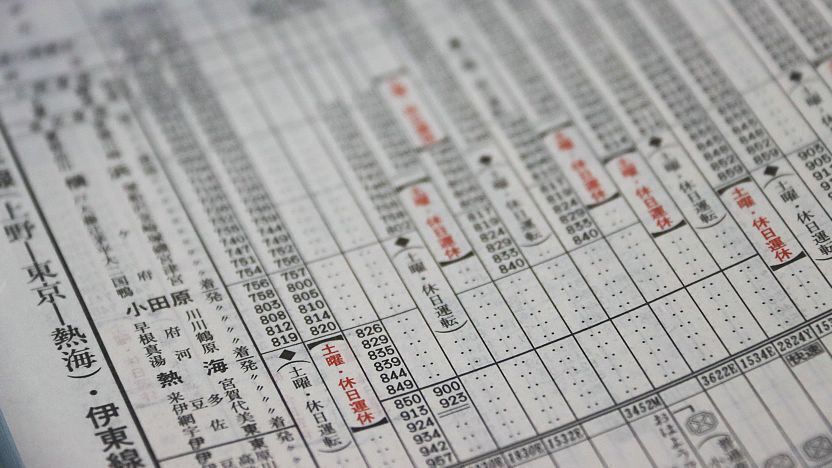
Japan has an extensive and efficient train network ; however, without an intimate knowledge of the system, its complexity can make it difficult to figure out an efficient route. On top of that, while most railway, bus and ferry companies publish their timetables online, few offer good English language resources. Luckily there are several good English online route finders available on the internet to help travelers navigate the railway system in Japan.
Route finders allow you to find transportation routes between any two train stations in Japan. Below are some of the better tools available:
Jorudan (aka Japan Transit Planner)
Jorudan has been around since the early days of the Internet. Today, Jorudan offers a website and an app , both of which come with free search functions and some additional paid functions. The free options available differ between the web and app, with the app version being greatly superior to the website.
The free app allows to exclude specific train categories (e.g. shinkansen or limited express trains), includes a Japan Rail Pass option, which allows results to be limited to trains covered by the pass, and also lists platform details and stations along the way. None of these features are provided by the free web version.
Covers: train, plane and bus
Pros and cons:
- has Japan Rail Pass option (app only)
- shows stations along the way (app only)
- shows platform numbers (app only)
- allows to exclude certain train categories (except free website)
- the free website version is limited to the very basics
Website: https://world.jorudan.co.jp/mln/en/ Android app: https://play.google.com/store/apps/details?id=jp.co.jorudan.japantransit iPhone app: https://apps.apple.com/us/app/japan-transit-planner/id524328198
Navitime (aka Japan Travel by Navitime)
The English route search service by Navitime is close to perfect. Not only does it have a Japan Rail Pass option, but it can similarly handle several other rail passes . It also allows to exclude results by train category and other means of transport. Besides covering train and flight connections, Navitime is particularly strong with bus connections across Japan and also covers driving routes, taxi fares and expressway tolls .
The service is free and comes as website and app .
Covers: train, plane, bus, taxi, car, walk
- has Japan Rail Pass (and other rail passes) option
- can exclude certain train categories or transport types
- shows taxi fares
- shows expressway tolls
- has wheelchair-friendly option
- has eco-friendly option
Website: https://japantravel.navitime.com/en/area/jp/route/ Android app: https://play.google.com/store/apps/details?id=com.navitime.inbound.walk iPhone app: https://apps.apple.com/us/app/japan-travel-route-map-jr/id686373726
Google Maps
Last but not least there is Google . Google map search results are tremendously powerful and not limited to trains , buses and flights , but also cover car , bicycle , walk and wheelchair -friendly options, while being interlinked with other useful Google services.
However, the Google Map connection tool does not currently allow users to exclude certain train categories from their search results and does not feature a Japan Rail Pass option to exclude trains that are not covered by the popular rail pass.
Covers: train, plane, bus, car, bicycle, walk
- shows stations along the way
- shows platform numbers
- has no Japan Rail Pass option
- does not allow to exclude certain train categories
Website: https://www.google.com/maps
Printed timetables
Printed railway timetables in Japanese are sold in bookstores and kiosks across Japan. Both nationwide timetables as well as those covering a specific region or railway company are available. The largest timetable books contain kana readings for all station names, but they can still be rather difficult to use without Japanese reading skills. Unfortunately, comprehensive printed English timetables are not widely available, however some rail companies print booklets and pamphlets of timetables for selected routes.
Among the most complete nationwide timetables are the JR and JTB timetable books, which are published monthy in full and pocket versions. Besides the full schedules of all train lines operated by Japan Railways (JR), they contain the basic schedules of trains by other railway , bus , ferry and airline companies as well as a wide array of practical information covering topics such as discount tickets, fares and regulations.
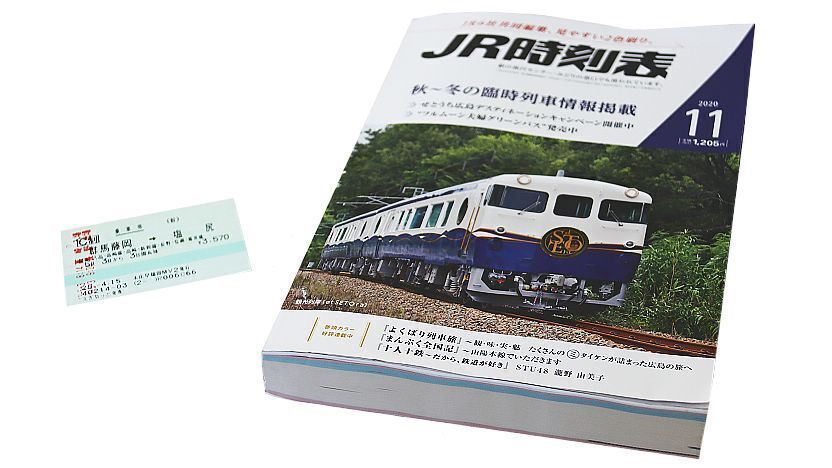
Questions? Ask in our forum .


IMAGES
COMMENTS
Learn about Japan's leading railway company and its network of trains across the country. Find out how to purchase tickets, book long-distance trains, and check service updates and status.
Learn about Japan's railway types, options, and tips for train travel in Japan. Find out how to use IC cards, reservations, and passes for long distance and inner-city journeys.
4. Choose how much time you want to actually be on a train. Separate passes for different legs can make things easier. Though the value of a rail pass increases the more you use it, it will constitute a big chunk of your travel budget. For me, the pass will typically cost about a third of the total outlay of a trip.
Japan Rail Pass holders enter the train platforms at the station from a different gate than those with standard train tickets. To enter, JR Pass travelers should go to the glass booth located next to the gates and show their JR Pass (and passport, if required) to the staff. Ticket gate at JR Station.
Learn how to navigate Japan's train network, from shinkansen bullet trains to local lines, with tips on fares, passes, tickets and stations. Find out how to enjoy the journey and the destinations with Lonely Planet's expert advice.
Train travel in Japan is really easy. Language is seldom a problem, stations have signs & departure boards in English as well as Japanese. You can see for yourself in the travel tips section below. Most Japanese trains are operated by the Japan Railways (JR) Group, which consists of 6 independent regional companies, JR Central, JR East, JR West ...
JPRail.com offers the resources of the train travel in Japan. I show you the major train guide, a lot of rail passes, how to reserve a seat, how to find the timetable, the access guide to major destination by train and/or bus, sample itineraries, my travel report and many more. Please find the page index below to exlpore JPRail.com. Future ...
Learn how to use Japan's railway system, including shinkansen (bullet train), with this guide. Find out how to buy tickets, use IC cards, plan your journey, and more.
How to travel by train and bus in Japan; When traveling throughout Japan, most visitors use public transport, such as trains, the shinkansen (bullet train), and buses. ... You can add money to your card at almost all train stations in Japan at the automatic ticket machines. You just need to insert your card into the machine, follow the ...
You can use English to search for the nation's railways, aircraft routes (train time, fares, time required) as well as to understand the detail information such as the ticket fare, IC card fares, express train costs, etc.
Japan's four major islands - Honshu, Hokkaido, Kyushu and Shikoku - are covered by an extensive and reliable network of railways. Trains are a very convenient way for visitors to travel around Japan, especially in conjunction with the Japan Rail Pass.. About 70 percent of Japan's railway network is operated by the Japan Railways (JR), while the rest is served by dozens of other private railway ...
It is typically between 500 and 4000 yen depending on how far you travel. Among the companies that charge a limited express fee is JR. Super Express (shinkansen) Shinkansen are operated only by JR and use separate tracks and platforms. A limited express fee has to be paid in addition to the base fare.
Plan your Japan rail trip with Japan Rail Planner. Easily create your route on a map, search for accommodation, estimate costs, and more! ... See how long it takes to travel between Japanese cities by rail. Share. Share your plan to visit Japan with the world. Passes. Track how many days your Japan Rail Pass would need to cover.
Guide to Japanese Train Tickets. Below is a list of the various railway tickets available in Japan: Regular tickets. Regular tickets simply get you from A to B. Our page about regular train tickets provides an introduction to the various fares and fees, such as the base fare and limited express fee, and the rules for using tickets.
Japan Route Finder & Planner. Find the best route including bullet train, bus, airline, and taxi. Compatible with your railway pass. Plan your trip by calculating the train cost and distance. Check the train schedule. View the route on a map. Know which station to transfer, which exit to go out.
The best pass for visitors is the Japan Rail Pass or JR pass, an all-inclusive ticket covering almost any Japan Rail train in the country - including most high-speed trains. The current price ...
Departures from Shinjuku Station are 5,140 yen for adults and 1,500 yen for children for two days. Keio runs trains from Tokyo's Shinjuku Station westward to Mount Takao (Takaosan), a popular hiking day trip. It offers the Mt. Takao Round-Trip Discount Ticket, with 20% off train and cable car or chairlift fares.
Legendary Shinkansen and limited express trains both boast incredibly fast travel times, and short-distance trains allow traveling to even small remotely-located villages. What is more, the Japanese famously value punctuality above all, and Japan's trains are no exception. The average annual delay of a train is just 54 seconds, can you believe ...
1) Unlike ticket machines in Japan, online booking is splintered into JR East, JR West , JR Kyushu, and JR Central * (*responsible for multi-corridor booking such as the Tokaido-Sanyo Shinkansen, and the nationwide Japan Rail Pass, etc…). Which you use will depend on where you are going! While JR Hokkaido and JR Shikoku are technically ...
Japan train tickets: Travel guide. January 15, 2024 . Categories Trains & Transportation. Japanese trains are famed for being fast, punctual, efficient, and comfortable. However, one thing that can confuse visitors is the wide variety of tickets on offer as it can be hard to work out which offer the best value.
Japan Rail Pass (Photo: oatautta / Shutterstock.com) The JR Pass is a multi-use, discounted rail ticket that gives passholders access to numerous JR trains, bus services, ferry services, and more. This pass is exclusively available to overseas visitors and can be purchased both online—via authorised retailers or JR's own official website ...
Japan Railways maps. Interactive and PDF downloadable maps to help you plan your trip to Japan. Find easy-to-read travel resources about the train and metro systems of Tokyo, Osaka, and Kyoto as well as details about the lines you can take with your Japan Rail Pass. Plan your holiday around Japan with our useful national railway maps.
The popular website Hyperdia discontinued offering timetable data from April 2022. Japan has an extensive and efficient train network; however, without an intimate knowledge of the system, its complexity can make it difficult to figure out an efficient route. On top of that, while most railway, bus and ferry companies publish their timetables ...